


This site is made possible by member support. ❤️
Big thanks to Arcustech for hosting the site and offering amazing tech support.
When you buy through links on kottke.org, I may earn an affiliate commission. Thanks for supporting the site!
kottke.org. home of fine hypertext products since 1998.
Entries for November 2019
A short documentary of two rival alt-right groups beefing at a Denny’s. This is surreal but also completely predictable.
Robert Lang on the 11 Levels of Complexity of Origami
In this video for Wired, physicist and origami master Robert J. Lang demonstrates the 11 increasingly complex levels of origami. How all the legs and antennae and other small features are designed at the more complex levels is fascinating.
See also Susan Orlean’s 2007 piece about Lang in the New Yorker and Lang’s TED Talk on the mathematics of origami.
The first magazine profile of Adam Sandler since 1996. “Being rich, he told me later, can buy you a chef or a personal trainer, but it cannot buy the self-control to not pound a whole thing of ice cream on the weekend.”
A Quick Cyber Shopping Guide for Black Friday
So, I’ve begun working on my annual holiday gift guide (here’s 2018’s guide) and hope to have it done as early as next week. If you’re a pal or a regular reader that has a product or service you think should be on the gift guide this year, let me know! Would love to get more small business stuff on there.
But I wanted to make this quick mini-guide for Black Friday / Cyber Monday because if you’re savvy about it, this weekend can be a good time to find some good deals on holiday gifts for your friends and family. Here’s what I dug up.
The best Kindle, the new waterproof Kindle Paperwhite, is only $85 (35% off). I have one of these and have read a few dozen books on it since I bought it in March.
You can order a Cybertruck from Tesla with only $100 down and then get a refund on your deposit later. It’s a little bit thrilling to push the “Place Order” button on a $77,000 item with the styling of a 1st gen Kindle.
The 5 Qt KitchenAid mixer is on sale for $240 (48% off). Today only so hop on this one.
My Tattly pals are offering 30% off on almost all of their awesome temporary tattoos.
23andMe’s Health + Ancestry DNA testing kit is $99 (50% off). AncestryDNA’s kit is only $50 (51% off). There’s also a DNA kit for dogs on sale for $90 (40% off) if you want find out what breeds make up that rescue you just adopted.
My friend Jodi is offering 15% off today at her Legal Nomads shop…just use the code HOLIDAYSALE19.
The 8 Qt Instant Pot is discounted down to $95 (47% off) while the 6 Qt WiFi-enabled Instant Pot is $90 (40% off).
The New York Public Library would like to remind you that everything at the library is free (with free returns).
Apple is offering gift cards if you buy select products like iPhone XR, AirPods, iPad Pro, and Beats headphones.
It’s not the most current retina-screen model, but this Macbook Air is only $650 (35% off).
A 3-month Audible subscription is $6.95/mo (53% off).
Need a VPN for private browsing? TunnelBear is just $50 for the year today (58% off).
Amazon has a slight discount (6%) on AirPods Pro, but they’ll likely arrive after the holidays (“usually ships within 1 to 2 months”). The Apple Watch Series 5 is also on sale for $380 (5% off).
I have zero idea if this product is any good, but you can buy a 50-inch 4K TV for just $217.
Hulu is $1.99/mo for 12 months for their ad-supported plan (regularly $5.99/mo).
I love my electric toothbrush and it’s on sale for $30 (40% off).
When you buy through links on kottke.org, I may earn an affiliate commission. Thanks for supporting the site!
Go champ Lee Se-dol retires because AI is unbeatable. “I’ve realized that I’m not at the top even if I become the number one through frantic efforts.”
Why We Celebrate Thanksgiving
Boston College historian Heather Cox Richardson has been writing a near-daily political dispatch called Letters from an American for the past several weeks (her archives go further back on Facebook), mostly about the impeachment proceedings and their historical context.
In today’s letter, Richardson reminds us why Americans celebrate Thanksgiving.
Everyone generally knows that the Pilgrims and the Wampanoags shared a feast in fall 1621, and that early colonial leaders periodically declared days of thanksgiving when settlers were supposed to give their thanks for continued life and — with luck — prosperity.
But this is not why we celebrate Thanksgiving.
We celebrate thanks to President Abraham Lincoln and his defense of American democracy during the Civil War.
Northerners elected Lincoln to the presidency in 1860 to stop rich southern slaveholders from taking over the government and using it to cement their own wealth and power. When voters elected Lincoln, those same southern leaders pulled their states out of the Union and set out to create their own nation, the Confederate States of America, based in slavery and codifying the idea that some men were better than others and that this small elite group should rule the country. Under Lincoln, the United States government set out to end this slaveholders’ rebellion and bring the South back into a Union in which the government worked for people at the bottom, not just those at the top.
Ornitographies, Time-Merged Images of the Paths of Birds Through the Sky
For his Ornitographies project, Xavi Bou takes photographs of birds and stitches them together into single images so that you can see their flight paths through the sky.

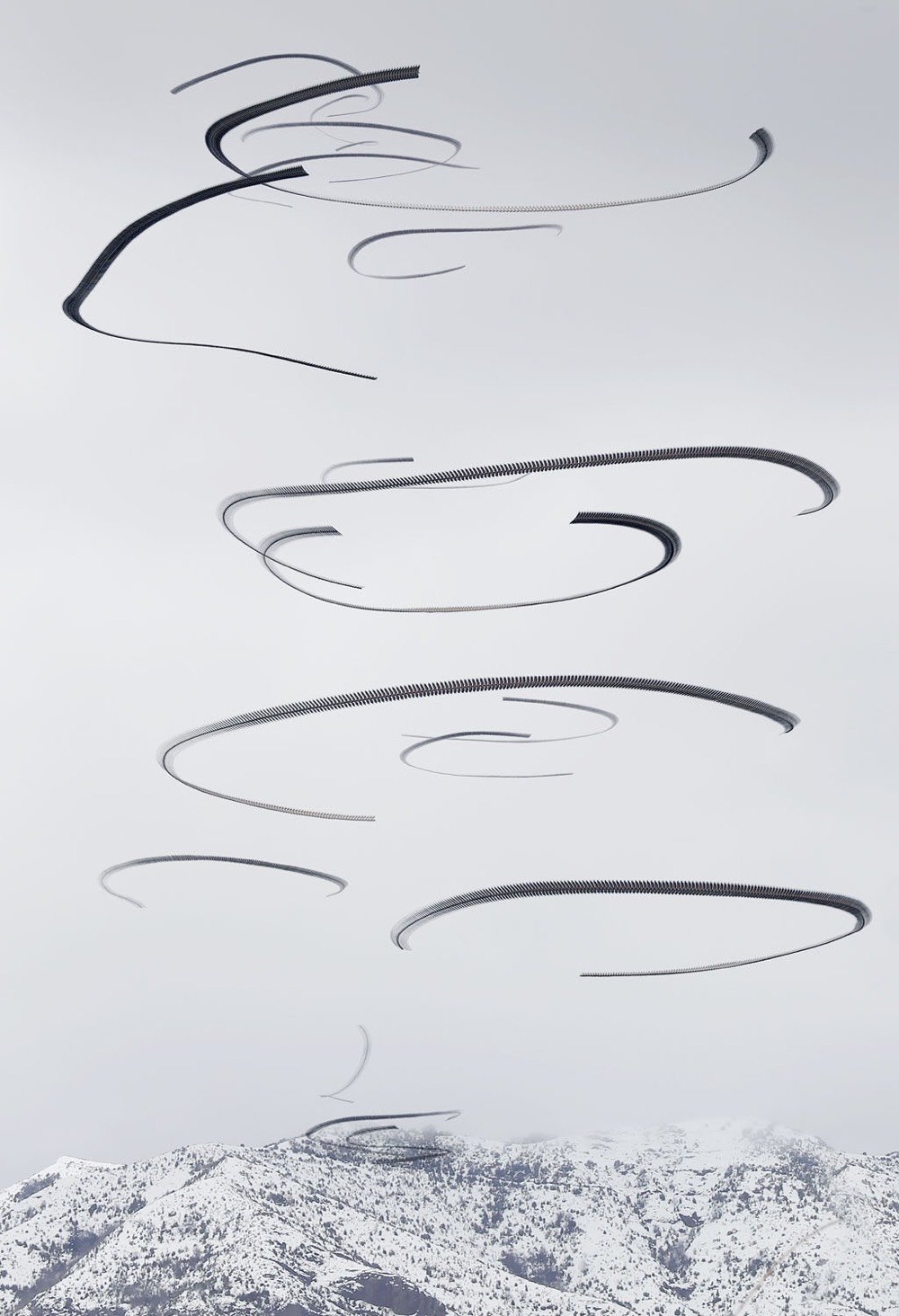
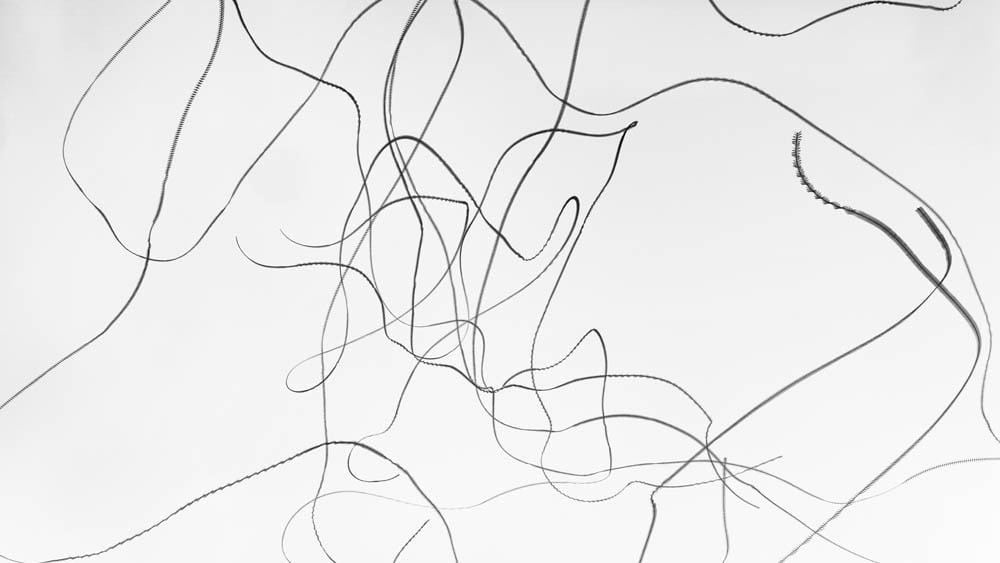
My guest editor Patrick briefly shared one of Bou’s images on his exit post a couple of weeks ago, but I thought they were worth another look.
Ed Yong wrote about the slow heart rate of deep-diving blue whales (2 beats per minute). The piece is designed so that when you’re reading it, each paragraph takes one whale heart beat to read. “(Ba-bum.)”
Ten Years Ago, I Called Out David Letterman. This Month, We Sat Down to Talk. “It’s not often that you speak truth to power and power responds, ‘Oops, sorry.’”
415 Hours of East German Home Movies from 1947-1990
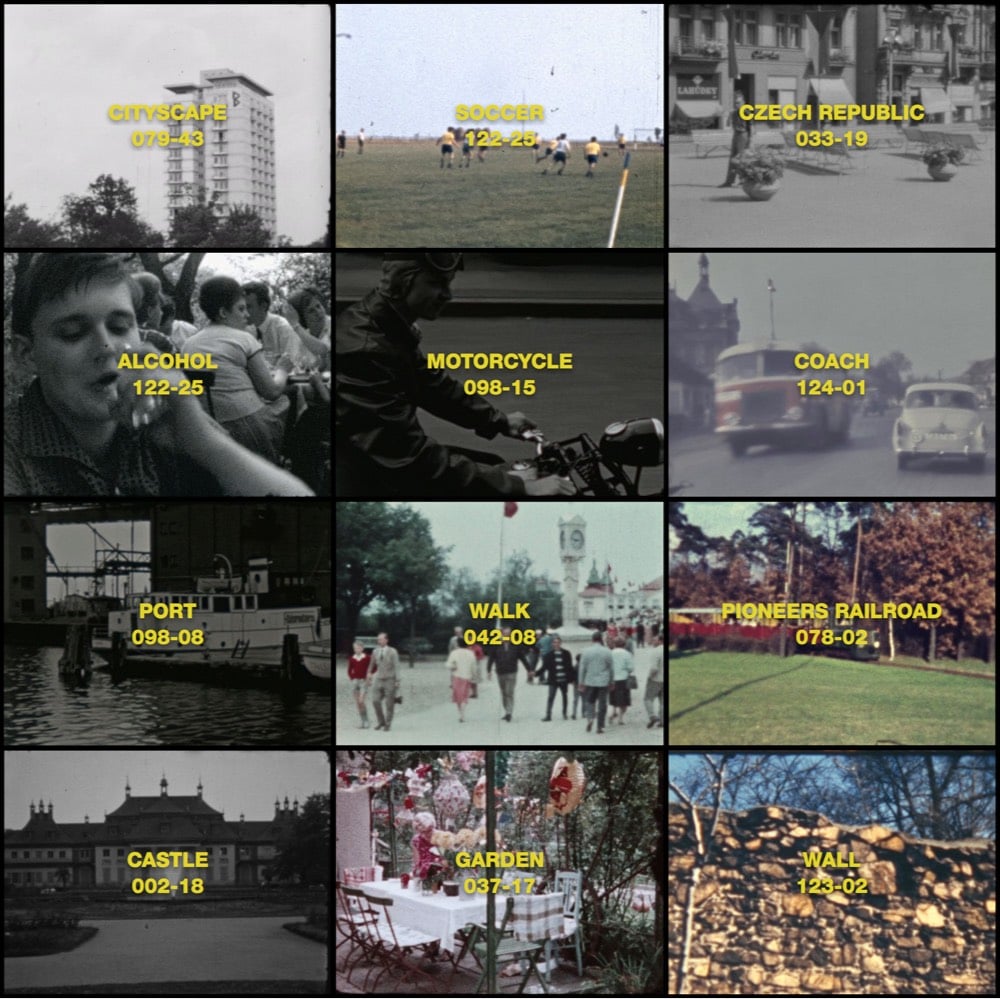
Open Memory Box houses what they say is the largest digitized collection of home movies from East Germany. The 415 hours of footage was filmed between 1947 and 1990 by 149 different families, who captured scenes of what it was like behind the Iron Curtain. Here’s one of the few videos they’ve posted to YouTube (the rest are presented on the site with a custom video player):
Some interesting searches are Trabant, sports, Berlin, China, and Brandenburg Gate. Light NSFW warning…East Germans went about in the nude more often than one might have guessed. Also, a lot of the footage has a huge watermark over it, which can make it difficult to focus on the actual subject matter.
33 Ways to Remember the 2010s. Unsurprising but still incredible how the internet enabled and infused everything on this list.
A ranking of movie journalists, from Nightcrawler’s Louis Bloom to Anchorman’s Ron Burgundy to Woodward & Bernstein in All the President’s Men. No Phil Connors from Groundhog Day tho?
Beautiful News Daily

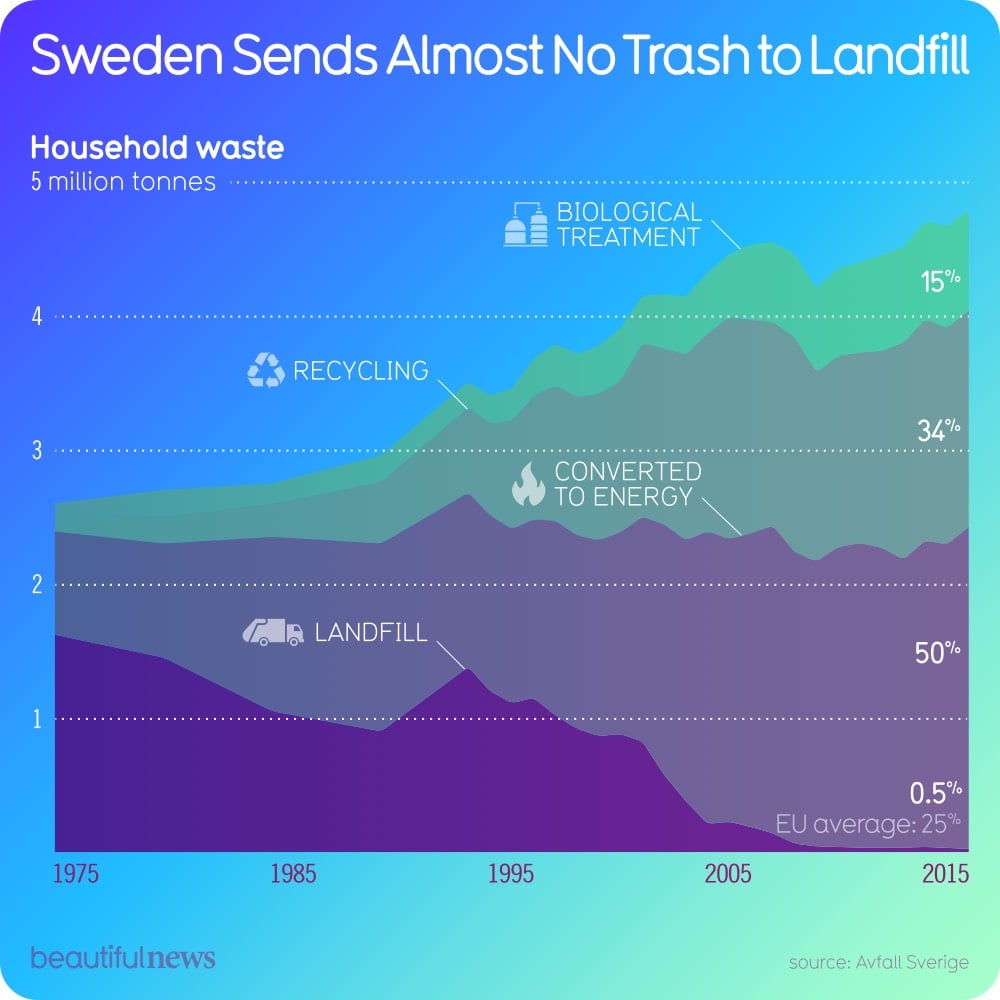
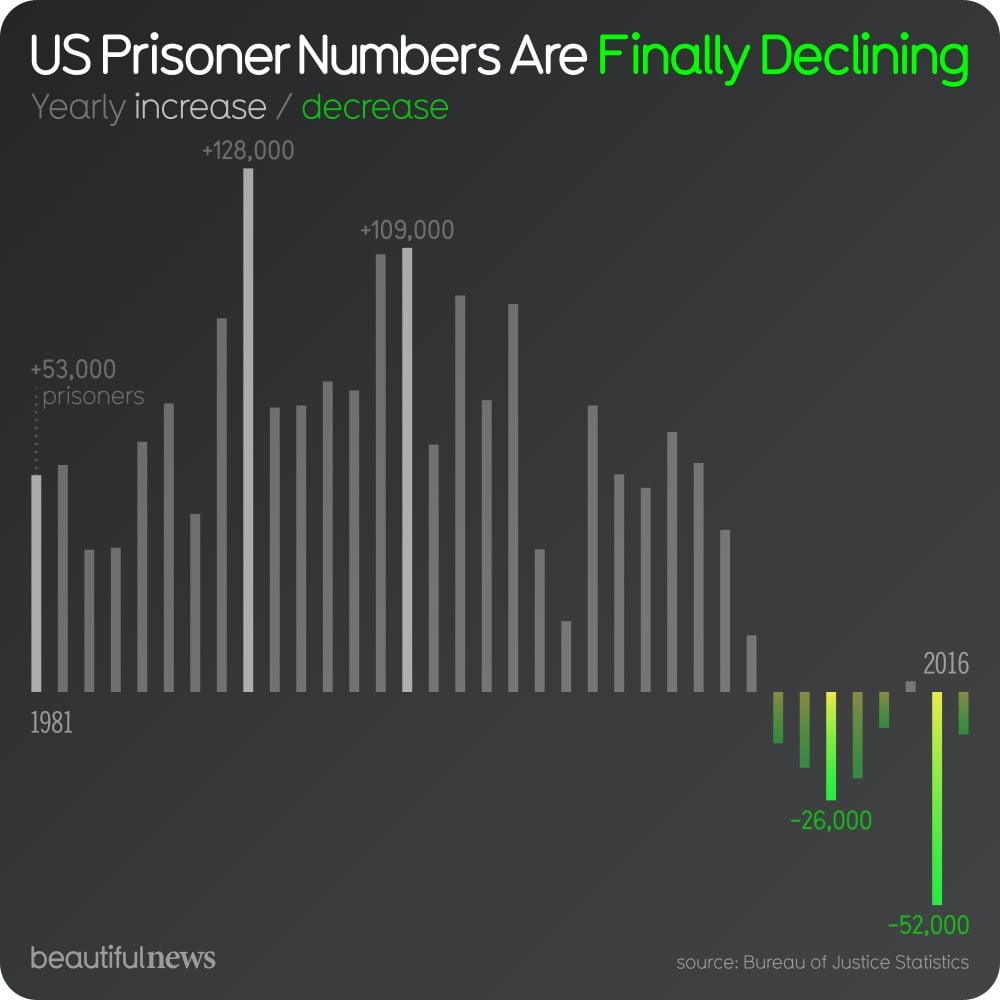
Each day since the beginning of October, the team of designers, technologists, and researchers at Beautiful News Daily (a project by Information Is Beautiful) have been posting infographics and data visualizations that share some good news about the world. The site’s tagline is “unseen trends, uplifting stats, creative solutions”.
The bad news we see everyday on news websites, newspaper front pages, and magazine covers is important (or can be, if it’s not designed to keep people frightened and hooked on the news), but the good news is just as significant (or can be, if it doesn’t cause you to forget the world’s true suffering and turmoil).
You can keep up with Beautiful News via their website, their weekly newsletter, or Twitter & Instagram. (via moss & fog)
Watching Teen Superstar Billie Eilish Growing Up
It is an understatement to say that a lot has happened to Billie Eilish in the past three years. She has gone from being a well-regarded but little-known singer/songwriter to being Grammy-nominated and one of the biggest young stars in the world. For the third year in a row, Vanity Fair sat down with Eilish to ask her about her life and career, what being famous is like, and how she views her past selves.
As I said last year, the video is fascinating to watch, like a teen celeb version of the 7 Up film series. She seems much happier and more confident — “I want to stay happy. That’s a big goal for me.” It will be interesting next year to see how this bit ages:
I like being famous. It’s very weird and it’s very cool.
(via @fimoculous)
The top 100 films directed by women. The Piano is #1; Lost in Translation, The Hurt Locker, and Lady Bird all make the top 25. I have not seen enough of these…
The Origins of Stop Motion Animation
In this episode of the Almanac video series from Vox, Phil Edwards takes a look at how an early film using stop motion animation, a 1912 short of dancing bugs made by an insect collector, showed the promise of the technique.
Though people have been experimenting with stop motion since the beginning of film, the new art really took off when an insect collector named Wladyslaw Starewicz (later Ladislas Starevich, among other spellings) wanted to see his beetles move.
His 1912 film, The Cameraman’s Revenge, was the most significant of those early experiments. By that time, he’d been discovered as a precocious museum director in a Lithuanian Natural History Museum, and that enabled him to make movies. The Cameraman’s Revenge was his boldest experiment yet, depicting a tryst between star-crossed (bug) lovers.
Starevich’s later films influenced the stop motion work of Terry Gilliam and Wes Anderson, as well as its earlier use in King Kong. Here’s the The Cameraman’s Revenge in its entirety:
A Deepfake Nixon Delivers Eulogy for the Apollo 11 Astronauts
When Neil Armstrong and Buzz Aldrin landed safely on the Moon in July 1969, President Richard Nixon called them from the White House during their moonwalk to say how proud he was of what they had accomplished. But in the event that Armstrong and Aldrin did not make it safely off the Moon’s surface, Nixon was prepared to give a very different sort of speech. The remarks were written by William Safire and recorded in a memo called In Event of Moon Disaster.
Fifty years ago, not even Stanley Kubrick could have faked the Moon landing. But today, visual effects and techniques driven by machine learning are so good that it might be relatively simple, at least the television broadcast part of it.1 In a short demonstration of that technical supremacy, a group from MIT has created a deepfake version of Nixon delivering that disaster speech. Here are a couple of clips from the deepfake speech:
Fate has ordained that the men who went to the moon to explore in peace will stay on the moon to rest in peace.
The full film is being shown at IDFA DocLab in Amsterdam and will make its way online sometime next year.
The implications of being able to so convincingly fake the televised appearance of a former US President are left as an exercise to the reader. (via boing boing)
Update: The whole film is now online. (thx, andy)
But technology is often a two-way street. If the resolution of the broadcast is high enough, CGI probably still has tells…and AI definitely does. And even if you got the TV broadcast correct, with the availability of all sorts of high-tech equipment, the backyard astronomer, with the collective help of their web-connected compatriots around the world, would probably be able to easily sniff out whether actual spacecraft and communication signals were in transit to and from the Moon.↩
The rights to the .org registry are being sold to a private equity firm and price caps have been removed. I don’t know how concerned I should be about this…
Thanksgiving Dinner Served on the L Train
File this under “I Love NYC”. On Sunday night, riders on a Brooklyn-bound L train were treated to a full Thanksgiving dinner, courtesy of some of their fellow straphangers. For more than 20 minutes, a group of riders dined and passed out plates of turkey, collards, stuffing, squash, and mashed potatoes to other folks in the car. Here’s a 21-minute chunk of the action:
They started the meal with a prayer and everything. An onlooker said of the event:
It was a 7 PM Sunday L from union square and was not crowded at all. They said it was an inclusive gesture to emphasize no one should go without food on Thanksgiving. They were loud but not rowdy or a nuisance. They even handed out plates to everyone in the car — I got one and the turkey was a solid 7/10 and collard 8.5/10. I’m glad I got to experience something like this. Makes a great story!
There were even MTA employees amongst us but no one objected.
Here’s a shorter video with some of the highlights:
(thx, johana)
Can You Copyright Work Made by an Artificial Intelligence?
In a recent issue of Why is this interesting?, Noah Brier collects a number of perspectives on whether (and by whom) a work created by an artificial intelligence can be copyrighted.
But as I dug in a much bigger question emerged: Can you actually copyright work produced by AI? Traditionally, the law has been that only work created by people can receive copyright. You might remember the monkey selfie copyright claim from a few years back. In that case, a photographer gave his camera to a monkey who then snapped a selfie. The photographer then tried to claim ownership and PETA sued him to try to claim it back for the monkey. In the end, the photograph was judged to be in the public domain, since copyright requires human involvement. Machines, like monkeys, can’t own work, but clearly something made with the help of a human still qualifies for copyright. The question, then, is where do we draw the line?
NYC bans foie gras starting in 2022. Meanwhile, the US production of most chicken, eggs, and pork is much more cruel & unethical and happens on a much larger scale.
An Official High-Resolution 3D Model of the Bust of Nefertiti Is Available for Download

The spectacular bust of Nefertiti, some 3300 years old, is currently housed at the Neues Museum in Berlin. A few years ago, high-resolution scans of the sculpture were released without permission of the museum. Now, after three years of pressure on the museum related to their claim on the bust, an official “full-color, 6.4 million-triangle 3D scan of the Bust of Nefertiti” has been released under a Creative Commons license. Cosmo Wenman has the story of how he eventually got the Prussian Cultural Heritage Foundation to release the scans.
For more than a decade, museums around the world have been making high-quality 3D scans of important sculptures and ancient artifacts. Some institutions, such as the Smithsonian and the National Gallery of Denmark, have forward-thinking programs that freely share their 3D scans with the public, allowing us to view, copy, adapt, and experiment with the underlying works in ways that have never before been possible. But many institutions keep their scans out of public view.
The Louvre, for example, has 3D-scanned the Nike of Samothrace and the Venus de Milo. The Galleria dell’Accademia in Florence 3D-scanned Michelangelo’s David. The Bargello has a scan of Donatello’s David. Numerous works by Auguste Rodin, including the Gates of Hell, have been scanned by the Musée Rodin in Paris. The Baltimore Museum of Art got in on the Rodin action when it scanned The Thinker. The Metropolitan Museum of Art has scans of works by Bernini, Michelangelo, and many others. But instead of allowing them to be studied, copied, and adapted by scholars, artists, and digitally savvy art lovers, these museums have kept these scans, and countless more, under lock and key.
In Berlin, the state-funded Egyptian Museum and Papyrus Collection has a high-quality, full-color 3D scan of the most iconic portrait sculpture ever produced, the 3,364-year-old Bust of Nefertiti. It has held this artifact since 1920, just a few years after its discovery in Amarna, Egypt; Egypt has been demanding its repatriation ever since it first went on display. The bust is one of the most copied works of ancient Egyptian art, and has become a cultural symbol of Berlin. For reasons the museum has difficulty explaining, this scan too is off-limits to the public.
Rather, it was off-limits. I was able to obtain it after a 3-year-long freedom of information effort directed at the organization that oversees the museum.
(via open culture)
This Algorithm “Removes the Water from Underwater Images”
As detailed in this Scientific American article by Erik Olsen, engineer and oceanographer Derya Akkaynak has devised an algorithm that “removes the water from underwater images” so that photos taken underwater have the color and clarity of photos taken in air. She calls the algorithm “Sea-thru”.
Sea-thru’s image analysis factors in the physics of light absorption and scattering in the atmosphere, compared with that in the ocean, where the particles that light interacts with are much larger. Then the program effectively reverses image distortion from water pixel by pixel, restoring lost colors.
One caveat is that the process requires distance information to work. Akkaynak takes numerous photographs of the same scene from various angles, which Sea-thru uses to estimate the distance between the camera and objects in the scene — and, in turn, the water’s light-attenuating impact. Luckily, many scientists already capture distance information in image data sets by using a process called photogrammetry, and Akkaynak says the program will readily work on those photographs.
The paper says the process “recovers color” and in the video above, Akkaynak notes that “it’s a physically accurate correction rather that a visually pleasing modification” that would be done manually in a program like Photoshop.
Nick Paumgarten writes about his year of concussions playing “beer league” hockey. “The thud was thicker than I’d expected. It felt as if my head had been slammed in a car door.”
How to Talk to a Climate Skeptic
The Grist has compiled a list of articles written by Coby Beck “containing responses to the most common skeptical arguments on global warming”. Here are some snippets from a few of the articles.
The temperature record is unreliable:
There is actually some truth to the part about the difficulties; scientists have overcome many of them in turning the hundreds of thousands of measurements taken in many different ways and over a span of more than a dozen decades into a single globally averaged trend.
But this is the nature of science — no one said it was easy. It’s taken the scientific community a long time to finally come out and say that what we have been observing for 100 years is in fact exactly what it looks like. All other possible explanations (for example, the Urban Heat Island effect) have been investigated, the data has been examined and re-examined, reviewed and re-reviewed, and the conclusion has become unassailable.
Global warming has been going on for the last 20,000 years:
If you have look at this graph of temperature, starting at a point when we were finishing the climb out of deep glaciation, you can clearly see that rapid warming ceased around 10,000 years ago (rapid relative to natural fluctuations, but not compared to the warming today, which is an order of magnitude faster). After a final little lift 8,000 years ago, temperature trended downward for the entire period of the Holocene. So the post-industrial revolution warming is the reversal of a many-thousand-year trend.
There has been work done reconstructing the solar irradiance record over the last century, before satellites were available. According to the Max Planck Institute, where this work is being done, there has been no increase in solar irradiance since around 1940.
It’s cold today in Wagga Wagga:
The chaotic nature of weather means that no conclusion about climate can ever be drawn from a single data point, hot or cold. The temperature of one place at one time is just weather, and says nothing about climate, much less climate change, much less global climate change.
Go forth and spread the truth as you travel to dine at various holidays tables around the country. (P.S. I first posted a link to this series in 2006. That it’s almost more necessary now than it was then is beyond depressing.)
Slow Motion Ocean
MOCEAN is a mesmerizing short film by cinematographer Chris Bryan of ocean waves crashing and surging in slow motion.
The feeling of jumping off the rocks in the dark by myself just to capture the very first rays of light hitting the ocean without another sole in sight is unexplainable, its one of the most amazing feelings ever, its like my own personal therapy.
Bryan worked as a cinematographer on the BBC’s Blue Planet II. Distracting URL watermark aside, I could have watched footage like this for another hour, especially of waves from underneath the water.
The Typologies of New York City
Using almost 1300 photos from Instagram of iconic/stereotypical shots of NYC, Sam Morrison spent 200 hours creating what he calls a crowdsourced hyperlapse video of the city. I love it. Reminds me a little of the old Microsoft application Photosynth, which could stitch together hundreds of online photos of, say, the Eiffel Tower or Golden Gate Bridge into a composite 3D image. (via a newly resurgent waxy.org)
2019 Films as Simpsons Screencaps
On Twitter, Hannah Woodhead posted a thread of screencaps from The Simpsons that uncannily encapsulate movies released in 2019. My two favorites are Parasite and The Lighthouse:

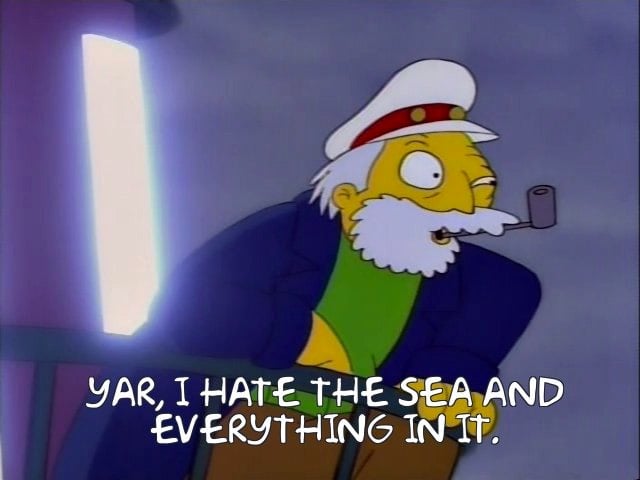
If you’d like, you can make your own using Frinkiac, the Simpsons screencap search engine. I did this one for Booksmart:

How to Move Abroad. “You’ve always dreamed about working by the beach, but how do you make that a reality?”
Spotlight and the Difficulty of Dramatizing Good Journalism
For the lastest episode of Nerdwriter, Evan Puschak reviews the history of movies about journalism and shows how the makers of Spotlight (and also All the President’s Men) show the often repetitive and tedious work required to do good journalism
I loved Spotlight (and All the President’s Men and The Post), but I hadn’t realized until just now how many of my favorite movies and TV shows of the last few years are basically adult versions of Richard Scarry’s What Do People Do All Day?
Speaking of, watching this video I couldn’t help but think that David Simon1 faced a similar challenge in depicting effective police work in The Wire. Listening to wiretapped conversations, sitting on rooftops waiting for drug dealers to use payphones, and watching container ships unloading are not the most interesting thing in the world to watch. But through careful editing, some onscreen exposition by Lester Freamon, and major consequences, Simon made pedestrian policing engaging and interesting, the heart of the show.
Puschak shared a quote from Simon near the end of the video and Spotlight director Tom McCarthy played the dishonest reporter Scott Templeton in season five of The Wire.↩
Sacha Baron Cohen Says Tech Companies Built the “Greatest Propaganda Machine in History”
In a keynote address to the Anti-Defamation League, entertainer Sacha Baron Cohen calls the platforms created by Facebook, Google, Twitter, and other companies “the greatest propaganda machine in history” and blasts them for allowing hate, bigotry, and anti-Semitism to flourish on these services.
Think about it. Facebook, YouTube and Google, Twitter and others — they reach billions of people. The algorithms these platforms depend on deliberately amplify the type of content that keeps users engaged — stories that appeal to our baser instincts and that trigger outrage and fear. It’s why YouTube recommended videos by the conspiracist Alex Jones billions of times. It’s why fake news outperforms real news, because studies show that lies spread faster than truth. And it’s no surprise that the greatest propaganda machine in history has spread the oldest conspiracy theory in history- — the lie that Jews are somehow dangerous. As one headline put it, “Just Think What Goebbels Could Have Done with Facebook.”
On the internet, everything can appear equally legitimate. Breitbart resembles the BBC. The fictitious Protocols of the Elders of Zion look as valid as an ADL report. And the rantings of a lunatic seem as credible as the findings of a Nobel Prize winner. We have lost, it seems, a shared sense of the basic facts upon which democracy depends.
When I, as the wanna-be-gansta Ali G, asked the astronaut Buzz Aldrin “what woz it like to walk on de sun?” the joke worked, because we, the audience, shared the same facts. If you believe the moon landing was a hoax, the joke was not funny.
When Borat got that bar in Arizona to agree that “Jews control everybody’s money and never give it back,” the joke worked because the audience shared the fact that the depiction of Jews as miserly is a conspiracy theory originating in the Middle Ages.
But when, thanks to social media, conspiracies take hold, it’s easier for hate groups to recruit, easier for foreign intelligence agencies to interfere in our elections, and easier for a country like Myanmar to commit genocide against the Rohingya.
In particular, he singles out Mark Zuckerberg and a speech he gave last month.
First, Zuckerberg tried to portray this whole issue as “choices…around free expression.” That is ludicrous. This is not about limiting anyone’s free speech. This is about giving people, including some of the most reprehensible people on earth, the biggest platform in history to reach a third of the planet. Freedom of speech is not freedom of reach. Sadly, there will always be racists, misogynists, anti-Semites and child abusers. But I think we could all agree that we should not be giving bigots and pedophiles a free platform to amplify their views and target their victims.
Second, Zuckerberg claimed that new limits on what’s posted on social media would be to “pull back on free expression.” This is utter nonsense. The First Amendment says that “Congress shall make no law” abridging freedom of speech, however, this does not apply to private businesses like Facebook. We’re not asking these companies to determine the boundaries of free speech across society. We just want them to be responsible on their platforms.
If a neo-Nazi comes goose-stepping into a restaurant and starts threatening other customers and saying he wants kill Jews, would the owner of the restaurant be required to serve him an elegant eight-course meal? Of course not! The restaurant owner has every legal right and a moral obligation to kick the Nazi out, and so do these internet companies.
The world record for the fastest Formula 1 pitstop is now 1.82 seconds. The footage is incredible…all four tires changed in under 2 sec.
Tesla introduces the Cybertruck. I cannot improve on what @mathowie said about it: “What the truck was he thinking?”
There’s always something interesting in Spencer Wright’s The Prepared newsletter. This week’s was particularly good.
People share answers to common questions they get related to their professions. “Literally, all I do as a volcanologist: Yellowstone is not going to erupt & kill us all any minute.”
The Art of the Travelling Salesman Problem


All art is bounded by one constraint or another. Mathematician Robert Bosch makes what he calls “optimization art”, which is best embodied by these images produced as solutions to the travelling salesman problem. Each image is made up of a continuous line that is the shortest possible route through a series of points without revisiting any single point, much like the optimal route of a travelling salesperson visiting cities. The rendition of a van Gogh self-portrait uses a solution for 120,000 “cities” while the single line forming the Girl with the Pearl Earring visits 200,000 cities.
I would love to see an Observable notebook where you could upload any photo to make images like these. (via @Ianmurren)
Manufacturers say you should destroy used child car seats because they could be unsafe. But there’s no data to back up the claim that car seats expire or grow less safe over time.
How to Watch Tonight’s Rare Unicorn Meteor Storm
Astronomers are expecting a particularly strong meteor storm tonight visible from parts of Europe, Africa, North America, and South America that could produce meteors at a rate of 400/hour or more. The storm’s radiant will be centered right around the constellation of Monoceros (that’s the unicorn, which makes this a very 2019 event). Just find Orion in the eastern sky and look a bit down and to the left, right where the red patch is:
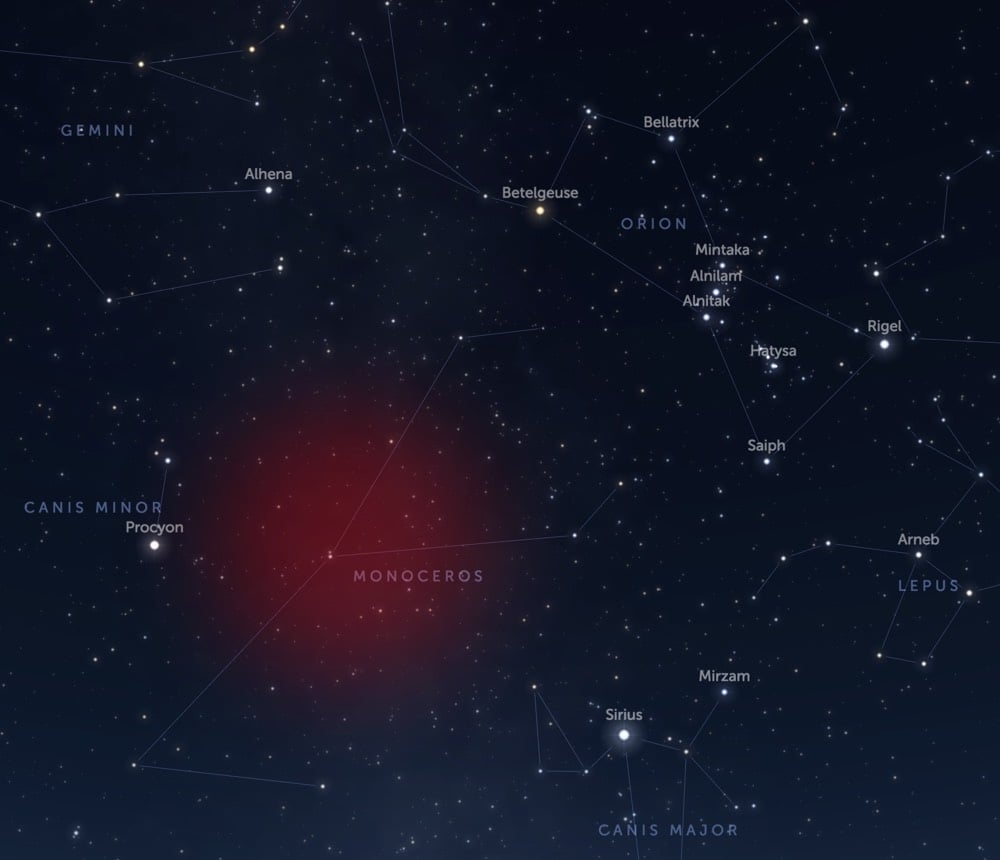
If you’re on the east coast of the US and the sky is clear tonight, you should head outside around 11:15pm EST. And be prompt…the storm’s peak activity will last 15-40 minutes. I’m going to see if Night Mode on my iPhone 11 Pro can capture any of the action…
See also the time I saw a boomerang meteor explode like a firework in the night sky. (thx, megan)
On healthy self-doubt and blowhard syndrome. “We’re great the way we are, level-headed self-assessments and all. Stop rewarding them for being jackasses.”
The Colorful Ceilings of Mumbai’s Taxis


Since April 2017, Rachel Lopez has been taking photos of the ceilings of Mumbai taxis, many of which are decorated with colorful vinyl overlays. As Lopez says in a piece she wrote for PRI, “it’s more fun than the cold, gray inside of an Uber”. (via @themexican)
Border Tuner is a interactive public art installation where people shine powerful lights across the US/Mexico border. If lights are shined at each other, a communications channel opens between the two.
The 50 Best Nonfiction Books from the Past 25 Years
Slate recently compiled a list of the 50 best nonfiction books published in the past 25 years and it could not possibly be more up my alley. Let’s take a look at some of the books on the list:
Into the Wild by Jon Krakauer. “Through his reporting of McCandless’ passionate and foolhardy journey into transcendence — and writing about his own, similar youthful experiences — Krakauer explores our modern relationship to the wilderness and the deep desire many young people feel to seek out unthinkable danger.”
A Supposedly Fun Thing I’ll Never Do Again by David Foster Wallace. “His editors at Harper’s sent him to a state fair and on a holiday cruise, pastimes whose reputations for carefree, middle American fun seemed hopelessly alien to Wallace himself, a hyperactive observational machine desperate to shed his own self-consciousness but incapable of doing so.” A personal favorite of mine, my book-length introduction to Wallace.
A Heartbreaking Work of Staggering Genius by Dave Eggers. I loved this when it came out. I wonder how it holds up…
The Night of the Gun by David Carr. “In 2008, David Carr had been a respected New York Timesman for years, the paper’s media reporter and a beloved mentor of countless young journalists. But two decades before that, Carr was a junkie — a crack addict who washed out of journalism jobs, who was rung up by the Minneapolis cops nine times, and whose twin daughters were born 2 1/2 months premature to a mother who’d smoked crack the night before their delivery.”
The Warmth of Other Suns: The Epic Story of America’s Great Migration by Isabel Wilkerson. A wonderful masterful book, one of my all-time favorites.
Barbarian Days: A Surfing Life by William Finnegan. “Barbarian Days is a masterpiece of sports writing, focusing its lens on the smallest unit of both athletic and artistic achievement: the single human body, attempting to do something difficult and beautiful.”
I’ve read fewer of the listed books than I would have thought. Time to remedy that.
142 new geoglyphs have been discovered in Peru with the help of AI technology. The glyphs are ~2000 years old and some are up to 300 feet across.
Renderings of Our Dystopian Pop Culture Future
For more than 11 years for a series he calls Everydays, Mike Winkelmann (aka Beeple) has been making a daily picture. As you might expect from the breakneck pace, some of them aren’t that interesting (there’s a lot of juvenile stuff here tbh), but my favorite ones are the Black Mirror-ish with decayed or repurposed pop cultural references.




You can view more of Winkelmann’s work on Behance, Tumblr, and his website. (via dense discovery)
Oxford Dictionaries has named its word of the year for 2019: “climate emergency”. The shortlisted words all relate to climate change in some way: “flight shame”, “plant-based”, “ecocide”, etc.
How the Great Pyramid at Giza Looked in 2560 BCE
The current outer surface of the Great Pyramid at Giza is made of rough limestone blocks, colored a dark sandy brown from hundreds of years of pollution and weathering. But when it was first built, there was a smooth layer of fine white limestone on the outside of the structure, all cut to the same angle and polished to a shine so bright it almost glowed. It might have looked something like this (current view for reference):
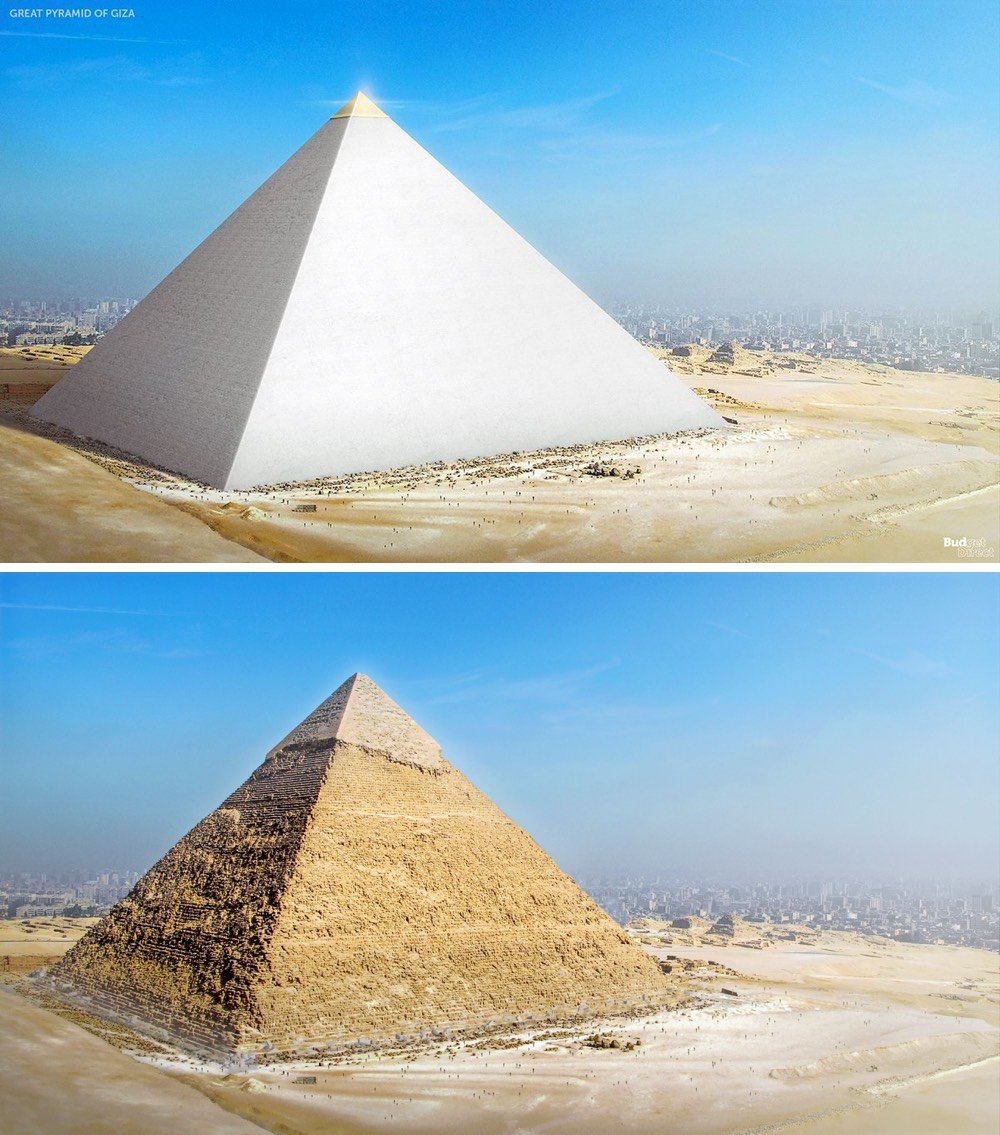
This video from the Smithsonian shows how the fine limestone was sanded to that white sheen:
In addition, the structure would likely have been topped with a pyramidion, a capstone made of solid granite and covered in a precious metal like gold. The sheer size of the pyramid must have been enough to blow ancient minds, but seeing it all shiny and topped in gold… well, no wonder they thought their rulers were gods.
FYI, The Irishman is opening wider this weekend. For some reason, listings aren’t available everywhere yet, so check the official site for showtimes.
Going to the Movies with Jackie Kennedy
Carly Simon’s recent piece in the New Yorker about going to the movies with Jackie Kennedy (an excerpt of her book Touched by the Sun: My Friendship with Jackie) was unexpectedly moving. And funny. And thoughtful. Trying to avoid seeing anything related to Oliver Stone’s JFK — “scarier, even, would be a two-minute trailer for ‘JFK’ inserted before the feature-length film we’d gone to see” — the two opted instead for Warren Beatty’s mobster flick, Bugsy.
Every time a shot sounded on the screen — and the film was plenty violent — she reacted physically, dramatically, her body mimicking the victim’s.
How do you deal with trauma like that when society keeps reminding you of it, not only generally (with gunshots in movies) but specifically, with blockbuster conspiracy movies that depict in detail the exact moment when your life was torn apart? And how can you be a good friend to someone who suffered from PTSD (and perhaps never recovered)? How do you assure her that you’re a safe harbor for her thoughts and feelings, that you’ll help insulate her without isolating her?
P.S. Somehow, in everything I’ve read/seen about the Kennedys over the years, I’d never heard that Jackie had given birth to a premature baby boy named Patrick in August of 1963. The baby died 39 hours after his birth. Her husband was assassinated just 105 days later. I… Jesus.
This is an interesting article about boring machines. Tunnel boring machines.
Rebel Girls Chapter Books

The makers of the hugely popular (at least in our household) Good Night Stories for Rebel Girls series are branching out into chapter books. Their first two are available now: Ada Lovelace Cracks the Code and Madam C.J. Walker Builds a Business. Lovelace is, of course, the pioneering computer programmer while Walker a cosmetics industry pioneer and America’s first female self-made millionaire.
You can also listen to the Rebel Girls podcast episodes featuring Lovelace and Walker.
Predictions about the year 2029 using headlines from 2019. “President Xi Will Be Our Stalin”, “Racism Will Thrive, But No One Will Say the Word”, “Child Separation Will Never Be Forgotten”.
The Hippie Aesthetic of the 60s Is “Art Nouveau on Acid”
I had somehow never registered this before, but it was (ridiculously) obvious once it was pointed out to me in this video: the psychedelic design of music posters in the 60s were inspired in part by the Art Nouveau movement of the late 1800s. For instance, here’s an absinthe advertisement from the 1890s and a 1966 Pink Floyd poster.
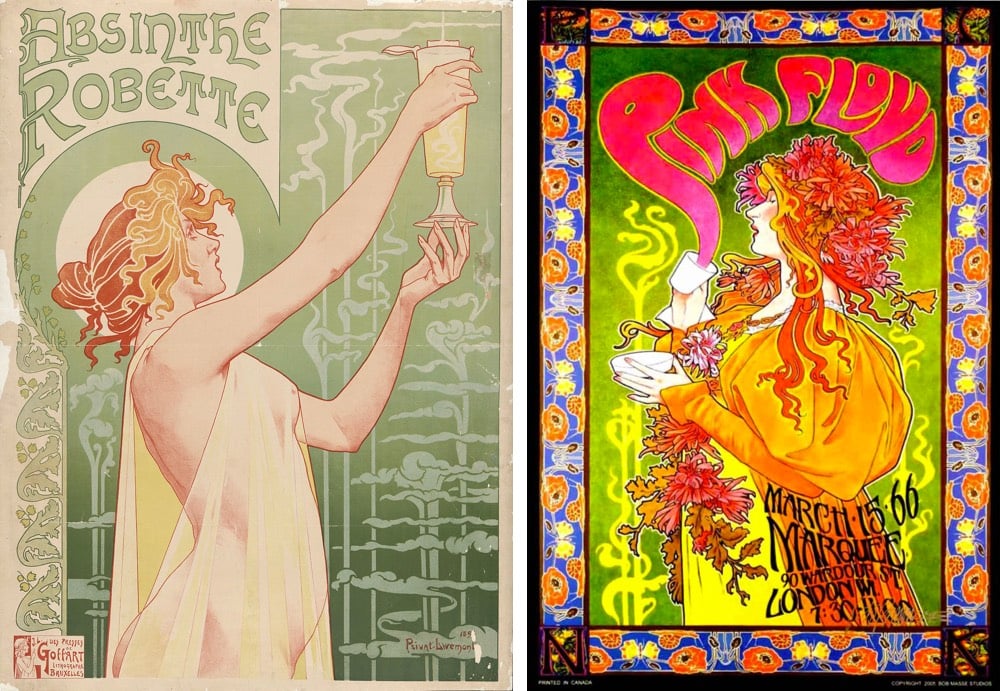
“You can draw a straight line between Art Nouveau and psychedelic rock posters,” Martin Hohn, president of the Rock Poster Society, says. “Mucha, Jules Chéret, Aubrey Beardsley. Borrow from everything. The world is your palette. It was all meant to be populist art. It was always meant to be disposable.” He later adds: “What the artists were saying graphically was the same thing the rock bands were saying musically.”
Well, everyone knows that Midtown Manhattan sucks. What this blog post presupposes is… maybe it doesn’t? (I have always liked Midtown for reasons that are unknown even to myself.)
Life in Miniature
Delph Miniatures is a small company that makes what they call “modern miniatures”, 1/12th scale miniatures of everyday things like washing machines, ironing boards, and mobility scooters. Ellen Evans’ short documentary about the miniatures and the mother/daughter team who make them is completely delightful; I love everything about these women and their work.
They make contemporary miniatures because they want to represent our culture as it is right now and not as it was back in Victorian or Elizabethan times.
Our inspiration is not in resource books or museums, but physically around us, all the time, in our homes, in the shops of our home city, Bradford, and in the lives of our friends and family. We love creating something different and modern that someone wants. In this way our range has expanded as people have asked for more new things. Ideas are all around us. You may be living in a Victorian house but you still have your TV, your microwave, and your computer.
Just look at this meticulous work by Kath Holden and Margaret Shaw — the attention to detail is inspiring:
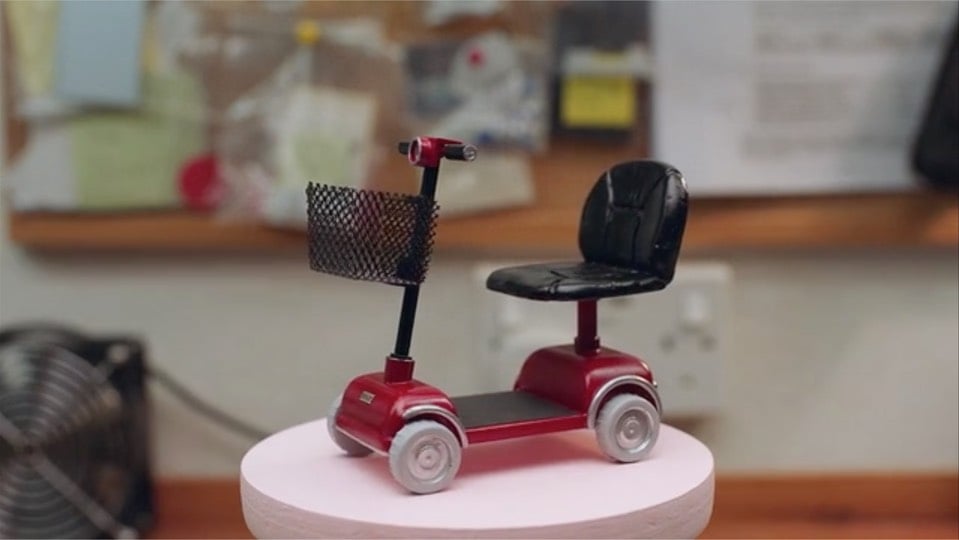
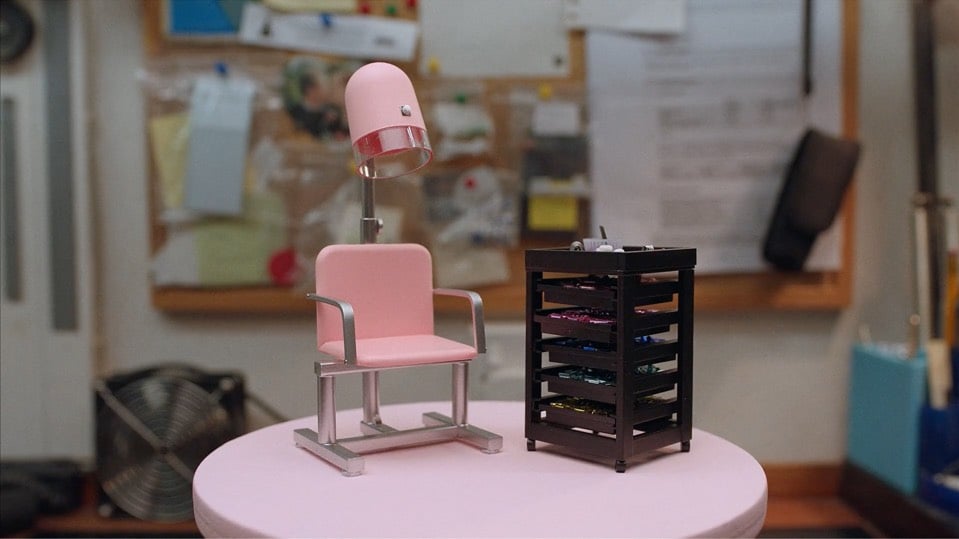
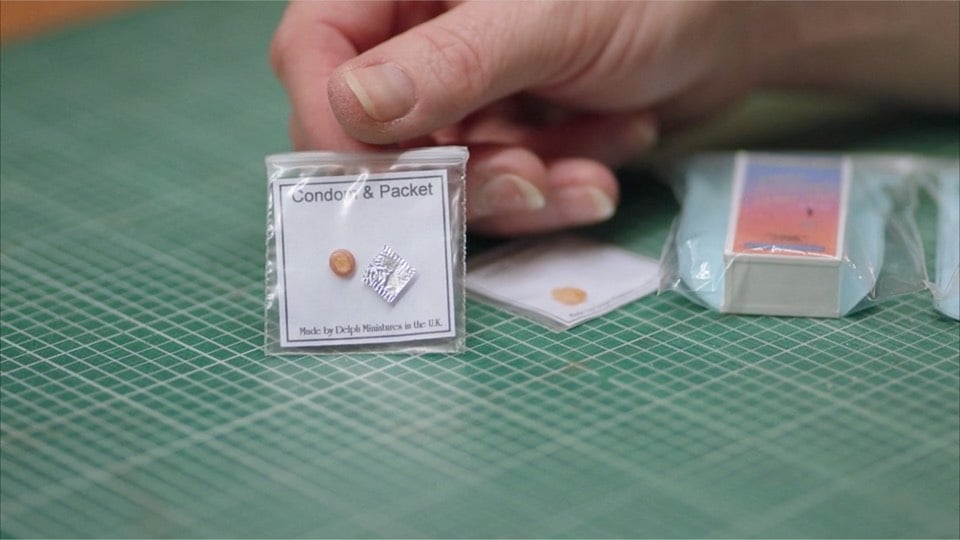
Yes, that’s a wee condom and its wrapper, which Delph assures us is made of actual latex and “the correct size diameter scaled down of a standard condom”. You can buy your own here for £8.58. The mobility scooter is £77.81 and you can buy everything you need to make a mini beauty salon right here, including a “free wifi” sign and dome-type security camera. Shop the rest of their store here..so many good things! (via the morning news)
Spinning Tethers for Space Propulsion
I love rocket launches. They are loud, carry cool things into space, and last a surprisingly long time considering how fast the rocket is already traveling when it clears the tower. But I think we’re going to look back on this era of space travel and marvel that launches & rockets were our only means of getting things into and around space (planetary gravity assists notwithstanding). We’re already moving in that direction; the initial tests of a space sail inspired by Carl Sagan have been promising. Another space propulsion idea is to use spinning space tethers to whip smaller, slower space vehicles from relatively low altitudes to higher orbits or even to the Moon, Mars, or beyond. This video from Kurzgesagt explains how these tethers work and what we could do with them.
I believe Neal Stephenson wrote about space tethers (or something very similar) in Seveneves.
Illustrated chronicle of a night spent in a NYC bodega. “1:46am: I just got off a bat mitzvah… I motivate people to dance. There’s a lot of new dance moves I learn on TikTok. I learned the Woah and the Milly Rock.”
Phoebe Waller-Bridge Answers
The Guardian got a bunch of writers and performers — folks like Olivia Colman, Roxane Gay, Nigella Lawson, and Victoria Beckham — to ask the delightful Phoebe Waller-Bridge a bunch of questions and the whole thing is delightful because she is, as I said earlier, delightful.
Lucy Prebble, playwright: How many really good works do you think a writer has in them?
PWB: I’m going to say infinite for the sake of my own professional optimism, but I don’t think there’s a rule. I do think there are only so many things you can pull out of the bones of you … and they are usually the good ones. I don’t have a number for you. Fuck it, six.
Jack Thorne, playwright: Did you ever consider an ending where the Priest — I refuse to call him Hot Priest — said yes?
PWB: May I clarify that I never scripted him as Hot Priest! That was the good work of the internet meeting Andrew Scott’s impossibly intense charisma. There was an idea for an alternative ending, but I’ll never say what it was…
Anne Enright, novelist: Is it better to be fucked up by religion than by life? And why is damage so sexy?
PWB: If I was going to choose, I’d rather be fucked up by religion. At least that is something I could feasibly escape and still be breathing.
Damage is indicative of vulnerability, which I think always feels a little dangerous. It is evidence that a person can feel deeply, that they can be open … then that delicious wall goes up and we just want to scramble over it and save (and feel) the person. It’s irresistible. I also think damage is a glimpse of something honest, and that’s always attractive.
iPhone Case Is Also a Playable Game Boy

Here’s a thing I just found out about: protective iPhone cases that are also playable Game Boy-style handheld gaming console. Here are a bunch of different ones on Amazon for different phones in a variety of colors that come preloaded with games.
Buyer beware on these though — the reviews are just ok, many of them likely don’t come with actual NES or Game Boy games, and who knows if they’ll actually protect your phone? The CaseBoy claims to come preloaded with games like Super Mario Bros, Donkey Kong, Tetris, Galaga, Contra, and the like, but it seems unlikely that Nintendo (or anyone else) licensed these games to them. The Verge panned one of the cases in this review (so did MacWorld).
I scrolled to “E” to find the Frogger knock-off, in which I maneuvered a single block through rows of moving bricks. The letter “D” let me play a Galaga clone, although I had to imagine the missiles since they didn’t show up on screen. Games I-Z are all variants on Tetris, ranging from the standard tile-matching puzzler to one that made the stack of blocks move to the right every few seconds.
As for its actual effectiveness as a case? It depends.
Fun idea though! Has anyone used one of these? I’m tempted to order one just to see how bad/good it is.
The Traditional Seasons and Inventive Microseasons of the World
In this info-packed little Twitter thread, science writer Ferris Jabr reminds us that the four “traditional” seasons of summer, autumn, winter, and spring are not universal and mainly only apply to the mid-latitudes. Other places on Earth observe different patterns. For starters, the polar year is split into light and dark while the tropics typically have a wet and a dry season.
The traditional Japanese calendar, borrowed from the Chinese, splits the year into 24 seasons and 72 microseasons, each lasting about 5 days. Some of those microseasons:
February 9-13 - Bush warblers start singing in the mountains
February 24-28 - Mist starts to linger
March 26-30 - First cherry blossoms
June 11-15 - Rotten grass becomes fireflies
July 29-August 2 - Earth is damp, air is humid
October 18-22 - Crickets chirp around the door
November 22-26 - Rainbows hide
January 30-February 3 - Hens start laying eggs
Indian calendars used in India, Bangladesh, Nepal, and Sri Lanka have six seasons: summer, monsoon, early autumn, late autumn, winter, and spring.
The Cree calendar has six as well, augmenting the usual four seasons with late spring and ice freeze-up.
In some climates, there is a period in the spring called the “hungry gap” between when the winter vegetables run out and the spring veggies aren’t yet ready to harvest.
Indian summer is the term generally used for a warm microseason that sometimes occurs in the autumn after a hard frost, but I prefer the similar Gaelic season “little autumn of the geese”.
Members of the Gulumoerrgin language group in Australia observe seven seasons, including heavy dew time, big wind time, and spear grass & goose egg time.
Velvet season refers to a spring period in the Crimea that is pleasantly warm but not hot, just the right time to wear velvet (instead of fur).
I wrote recently of Kurt Vonnegut’s assertion that the northern parts of the US have not four but six seasons, which dovetails nicely with the seasons here in Vermont:1
Vermonters know these six seasons all too well, although they give the two extra seasons different names. What’s going on right now and will continue into mid-to-late December is “stick season”. All the beautiful fall foliage has fallen off of the trees and we’re left with not-so-beautiful sticks until the snow flies regularly enough to call it winter. Between winter and spring — what Vonnegut calls “Unlocking” — is called “mud season” here. That’s when the dozens of feet of snow that fell during the winter, rapidly thawing ground, and Vermont’s rainy season collude to wreak havoc on unpaved roads and driveways, turning them into mud pits, some of which are impassable for a month or more.
See also The Secret to Enjoying a Long Winter. (via @circa1977)
This year, we’ve mostly skipped stick season and gone right into winter. It snowed the first week of November and we’ve had continual snow cover and below-freezing temperatures ever since.↩
Highlights from Circe by Madeline Miller
I’ve been enjoying sharing the highlighted passages from the Kindle books I’ve read lately. Going over your notes is a good way to solidify a book’s themes, ideas, and plot threads in your mind, especially for someone like me who tends to forget a lot of the earlier bits of what I’m reading. So I thought I’d go back through some previous reads in the same fashion, sharing some of the best bits of favorite books and refreshing my memory.
First up is Madeline Miller’s Circe, which was recommended to me by my friend Alaina. In the NY Times, Alexandra Alter called Circe “a bold and subversive retelling of the goddess’s story that manages to be both epic and intimate in its scope, recasting the most infamous female figure from the Odyssey as a hero in her own right”.
I’m starting here because I recently finished her debut novel, The Song of Achilles (the highlights from which I will share soon). I loved both books — Miller’s prose is somehow both spare and chock full of lyrical analogies and clever turns of phrase. Many of passages below highlight those qualities in her writing.
Page 3:
My mother did not argue further. Like everyone, she knew the stories of Helios’ temper when he was crossed. However gold he shines, do not forget his fire.
Page 14:
You cannot know how frightened gods are of pain. There is nothing more foreign to them, and so nothing they ache more deeply to see.
Page 37 (I am already bracing myself for the “you don’t understand…” of my kids’ teen years):
That is one thing gods and mortals share. When we are young, we think ourselves the first to have each feeling in the world.
Page 48:
All I knew was that I hated her. For I was like any dull ass who has ever loved someone who loved another. I thought: if only she were gone, it would change everything.
Page 66 (on useful fictions):
“Yes,” he said. “That is how it works, Circe. I tell Father that my sorcery was an accident, he pretends to believe me, and Zeus pretends to believe him, and so the world is balanced. It is your own fault for confessing. Why you did that, I will never understand.”
Page 67:
All those years I had spent with them were like a stone tossed in a pool. Already, the ripples were gone.
Page 85:
You can teach a viper to eat from your hands, but you cannot take away how much it likes to bite.
Page 90:
He stood up — I will not say gracefully, for he was too solidly built for that — but easily, like a door swinging on a well-fitted hinge.
Page 129:
I had not thought him so bold. But of course he was. Artist, creator, inventor, the greatest the world had known. Timidity creates nothing.
Page 129 (Reminds me of the quote “From the moment we are born, we begin to die.”):
I yearned for his hands, for all of him, mortal though he was, distant and dying though he would always be.
Page 132:
In a solitary life, there are rare moments when another soul dips near yours, as stars once a year brush the earth. Such a constellation was he to me.
Page 138 (a metaphor for inequality in America):
Every moment mortals died, by shipwreck and sword, by wild beasts and wild men, by illness, neglect, and age. It was their fate, as Prometheus had told me, the story that they all shared. No matter how vivid they were in life, no matter how brilliant, no matter the wonders they made, they came to dust and smoke. Meanwhile every petty and useless god would go on sucking down the bright air until the stars went dark.
Page 186:
And Odysseus, I thought. The spiral shell. Always another curve out of sight.
Page 186:
But there is a hand that must gather all those pieces and make them whole. A mind to guide the purpose, and not flinch from war’s necessities.”
“And that is your part,” I said. “Which means you are like Daedalus after all. Only instead of wood, you work in men.”
The look he gave me. Like purest, unmixed wine. “After Achilles died, Agamemnon named me Best of the Greeks. Other men fought bravely, but they flinched from war’s true nature. Only I had the stomach to see what must be done.”
His chest was bare and hatched with scars. I tapped it lightly, as if sounding what lay within. “Such as?”
“You promise mercy to spies so they will spill their story, then you kill them after. You beat men who mutiny. You coax heroes from their sulks. You keep spirits high at any cost. When the great hero Philoctetes was crippled with a festering wound, the men lost their courage over it. So I left him behind on an island and claimed he had asked to be left. Ajax and Agamemnon would have battered at Troy’s locked gates until they died, but it was I who thought of the trick of the giant horse, and I spun the story that convinced the Trojans to pull it inside. I crouched in the wooden belly with my picked men, and if any shook with terror and strain, I put my knife to his throat. When the Trojans finally slept, we tore through them like foxes among soft-feathered chicks.”
Page 190:
It was a trick of his, to set a sentence out like a plate on a table and see what you would put on it.
Page 191:
Sometimes, I would see him watching me. An intentness would come over his face, and he would begin to ask me his casual, sideways questions. About the island, about my father, the loom, my history, witchcraft. I had come to know that look well: it was the same he wore when he spotted a crab with a triple claw, or wondered over the trick tides of Aiaia’s east bay. The world was made of mysteries, and I was only another riddle among the millions. I did not answer him, and though he pretended frustration, I began to see that it pleased him in some strange way. A door that did not open at his knock was a novelty in its own right, and a kind of relief as well. All the world confessed to him. He confessed to me.
Page 194:
I held off as long as I could, but in the end she was the scab that I must pick.
Page 208:
Odysseus, son of Laertes, the great traveler, prince of wiles and tricks and a thousand ways. He showed me his scars, and in return he let me pretend that I had none.
Page 214 (there’s a relief in knowing, no matter how dire the details):
My madness in those days rose from a new certainty: that at last, I had met the thing the gods could use against me.
Page 217:
Do not listen to your enemy, Odysseus had once told me. Look at them. It will tell you everything.
Page 220 (reason != wisdom):
I looked into that shining gray gaze, her eyes like two hanging jewels, twisting to catch the light. She was smiling, her hand open towards me, as if ready to receive mine. When she had spoken of children, she had nearly crooned, as if to lull her own babe. But Athena had no babe, and she never would. Her only love was reason. And that has never been the same as wisdom.
Page 243 (endurance is also a virtue of mine…and a detriment):
But endurance had always been my virtue and I kept on.
Page 271 (I still remember reading this passage for the first time. It devastated me and I had to put the book down for awhile. Like much else in life, parenting is a struggle with yourself.):
Two children he had had, and he had not seen either clearly. But perhaps no parent can truly see their child. When we look we see only the mirror of our own faults.
Page 274:
I looked at her, as vivid in my doorway as the moon in the autumn sky. Her eyes held mine, gray and steady. It is a common saying that women are delicate creatures, flowers, eggs, anything that may be crushed in a moment’s carelessness. If I had ever believed it, I no longer did.
Page 279:
Once we were his again, he wanted something else. What is that if not a bad life? Luring others to you, then turning from them?
Page 286 (on the responsibility of perfection):
I remembered what Odysseus had said about her once. That she never went astray, never made an error. I had been jealous then. Now I thought: what a burden. What an ugly weight upon your back.
Page 294 (Telemachus is the main speaker here):
“That is how things go. You fix them, and they go awry, and then you fix them again.”
“You have a patient temper.”
“My father called it dullness. Shearing, cleaning out the hearths, pitting olives. He wanted to know how to do such things for curiosity’s sake, but he did not want to actually have to do them.”
It was true. Odysseus’ favorite task was the sort that only had to be performed once: raiding a town, defeating a monster, finding a way inside an impenetrable city.
Page 313:
But he was a harp with only one string, and the note it played was himself.
Dreamy Cave-Like Photos Taken Inside Musical Instruments
For a 2012 print campaign for the Berlin Philharmonic Orchestra, photographers Andreas Mierswa and Markus Kluska photographed the insides of musical instruments.

The photos of the string instruments evoke intimate concert halls, with shafts of light illuminating perfect spaces in which you could imagine string quartets playing to small audiences. Inspired by their work, Romanian artist and photographer Adrian Borda has produced his own set of similar photos.
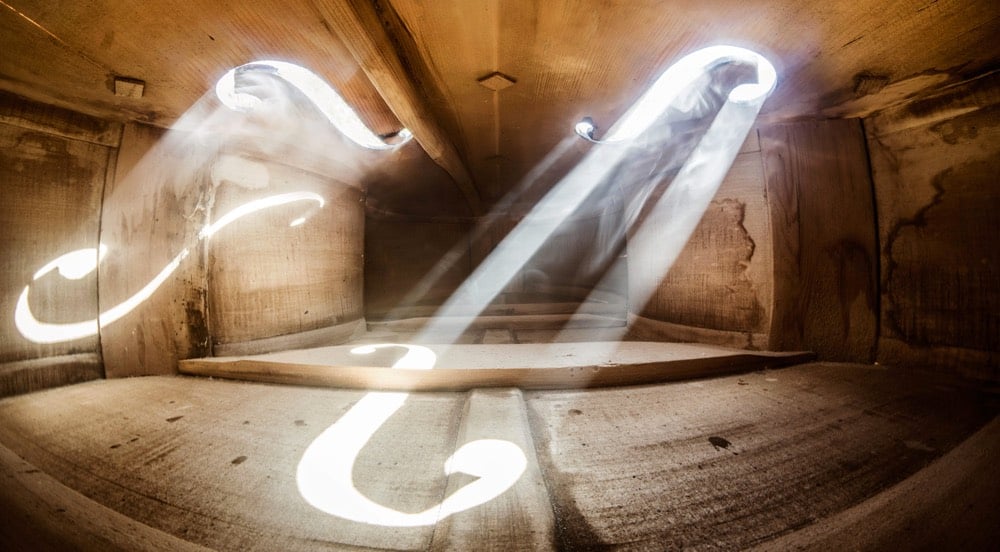
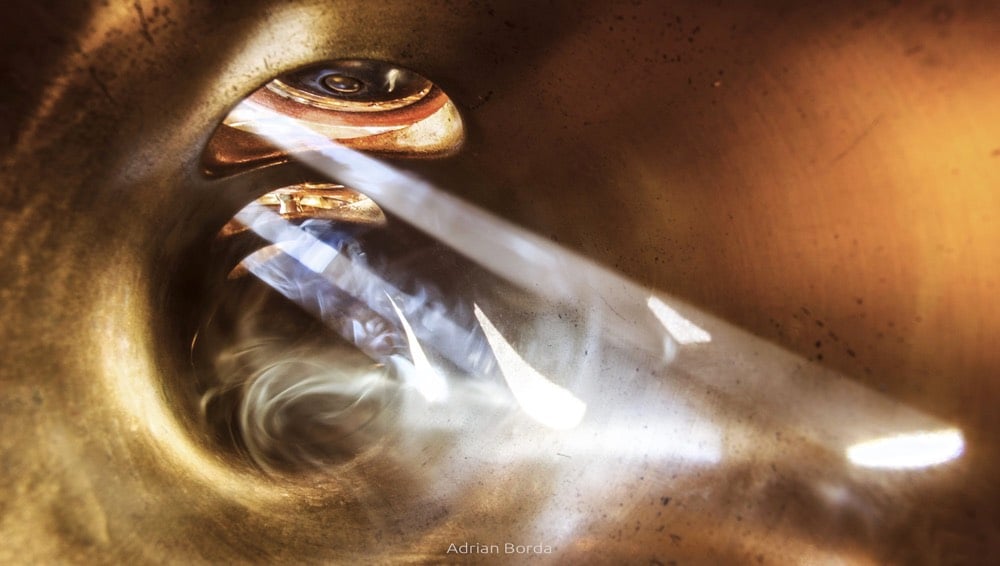
Free of the constraints of advertising, Borda’s images are a little grittier, reminding me less of tiny concert spaces than of natural rock formations like Arizona’s Antelope Canyon (and other slot canyons of the American Southwest), Petra, and the cenotes of the Yucatan in Mexico.

See also this cool inside-a-typewriter shot from Borda. (via @41Strange)
Javascript Library for Creating XKCD-Style Charts
Tim Qian has created a Javascript library called chart.xkcd for making charts that look hand-drawn in the style of XKCD.
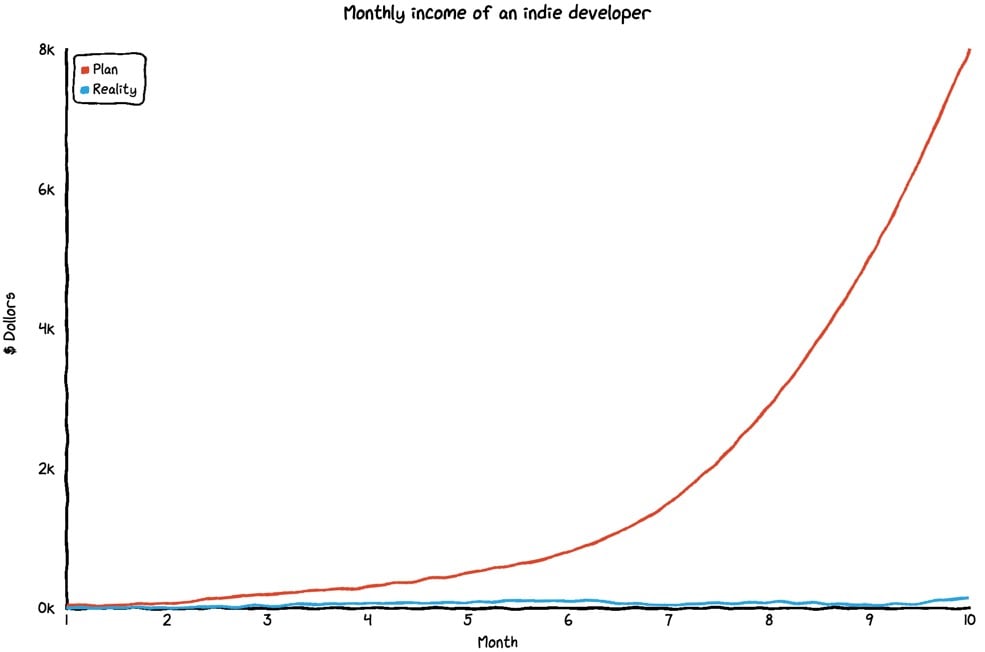
It’s easy to get started with chart.xkcd. All that’s required is the script included in your page along with a single
You can use it to make line charts, XY charts, bar charts, radar charts, and pie/doughnut charts. I am definitely going to be using this in the future.
Speaking of XKCD, Randall Munroe has a new NY Times column called Good Question where he answers odd science questions (a la What If?). The first installment: If I Touched the Moon, What Would It Feel Like?
Moon dust may not burn you, but it’s no picnic. Like Earth sand, moon dust is effectively made of tiny glass shards, but the sharp edges have not been worn down by erosion. As a result, it can be pretty unhealthy.
(via sidebar)
The Hayabusa2 spacecraft is headed back to Earth after collecting chunks of an asteroid. “The main spacecraft will sail on past us, but not before ejecting a capsule where the samples are safely stored.”
Research from the Salk Institute suggests that intermittent fasting works. “Restricting one’s calorie intake to an 8- to 10-hour window could confer a host of health benefits, including weight loss.”
The Secret to Enjoying a Long Winter

I grew up in Wisconsin, and have lived in Iowa, Minnesota, and New York. Except for a two-year stint in the Bay Area, I’ve experienced winter — real winter, with lots of snow, below-freezing temperatures, and little daylight — every year of my life and never had a problem with it. So I was surprised when my last two Vermont winters put me on my ass. In winter 2017-18, I was depressed, anxious, wasn’t getting out of bed in the morning, spent endless time on my phone doing nothing, and had trouble focusing on my work. And I didn’t realize what it was until the first nice spring day came, 70 and sunny, and it hit me: “holy shit, I’ve been depressed because of winter” and felt wonderful for the next 5 months, like a completely different person. Then last year I was so anxious that it would happen again that all that stuff was worse and started basically a week into fall.
Nothing helped: I tried getting outside more, spent more time with friends, got out to meet new people, travelled to warm places, took photos of VT’s beautiful winter landscapes, spent time in cities, cut back on alcohol, and prioritized sleep. Last year I skied more than ever before and enjoyed it more than I’d ever had. Didn’t matter. This stuff worked during the spring and summer but my winter malaise was seemingly impenetrable. The plan for this fall was to try a SAD lamp, therapy, maybe drugs, and lots more warm travel. But then something interesting happened.
Sometime this fall — using a combination of Stoicism, stubbornness, and a sort of magical thinking that Jason-in-his-30s would have dismissed as woo-woo bullshit — I decided that because I live in Vermont, there is nothing I can do about it being winter, so it was unhelpful for me to be upset about it. I stopped complaining about it getting cold and dark, I stopped dreading the arrival of snow. I told myself that I just wasn’t going to feel like I felt in the summer and that’s ok — winter is a time for different feelings. As Matt Thomas wrote, I stopped fighting the winter vibe and tried to go with it:
Fall is a time to write for me as well, but it also means welcoming — rather than fighting against — the shorter days, the football games, the decorative gourds. Productivity writer Nicholas Bate’s seven fall basics are more sleep, more reading, more hiking, more reflection, more soup, more movies, and more night sky. I like those too. The winter will bring with it new things, new adjustments. Hygge not hay rides. Ditto the spring. Come summer, I’ll feel less stress about stopping work early to go to a barbecue or movie because I know, come autumn, I’ll be hunkering down. More and more, I try to live in harmony with the seasons, not the clock.
Last night, I read this Fast Company piece on some research done by Kari Leibowitz about how people in near-polar climates avoid seasonal depression and it really resonated with this approach that I’d stumbled upon.
At first, she was asking “Why aren’t people here more depressed?” and if there were lessons that could be taken elsewhere. But once she was there, “I sort of realized that that was the wrong question to be asking,” she says. When she asked people “Why don’t you have seasonal depression?” the answer was “Why would we?”
It turns out that in northern Norway, “people view winter as something to be enjoyed, not something to be endured,” says Leibowitz, and that makes all the difference.
The people in the Norwegian communities Leibowitz studied, they got outside as much as they could — “there’s no such thing as bad weather, only bad clothing” — spent their time indoors being cozy, came together in groups, and marveled at winter’s beauty. I’d tried all that stuff my previous two winters but what seems to have moved the needle for me this year is a shift in mindset.
As I experienced firsthand Tromsø residents’ unique relationship to winter, a serendipitous conversation with Alia Crum, assistant professor of psychology at Stanford University, inspired me to consider mindset as a factor that might influence Tromsø residents’ sunny perspective of the sunless winter. Crum defines mindsets as the “lenses through which information is perceived, organized and interpreted.” Mindsets serve as an overarching framework for our everyday experiences — and they can profoundly influence how we react in a variety of situations.
Crum’s work has shown that mindsets significantly influence both our physical and mental health in areas as diverse as exercise, stress and diet. For example, according to Crum’s research, individuals can hold the mindset that stress is either debilitating (bad for your health and performance) or enhancing (motivating and performance-boosting). The truth is that stress is both; it can cause athletes to crumble under pressure and lead CEOs to have heart attacks, but it can also sharpen focus and critical thinking, giving athletes, CEOs and the rest of us the attention and adrenaline to succeed in high-pressure situations. According to Crum’s work, instead of the mere presence of stress, it is our mindset about stress — whether or not we perceive it as a help or a hindrance — that contributes most to health, performance and psychological outcomes.
This is the woo-woo bullshit I referred to earlier, the sort of thing that always brings to my mind the advice of self-help gurus embodied by The Simpsons’ Troy McClure urging his viewers to “get confident, stupid!” Is the secret to feeling happy really just to feel happy? It sounds ridiculous, right? This is the bit of the Fast Company piece that resonated with me like a massive gong:
But overall, mindset research is increasingly finding that it doesn’t take much to shift one’s thinking. “It doesn’t have to be this huge complicated thing,” says Leibowitz. “You can just consciously try to have a positive wintertime mindset and that might be enough to induce it.”
So how has this tiny shift in mindset been working for me so far? It’s only mid-November — albeit a mid-November where it’s already been 5°F, has been mostly below freezing for the past week, and with a good 6 inches of snow on the ground — but I have been feeling not only not bad, but actually good. My early fall had some seasonally-unrelated tough moments, but I’ve experienced none of last year’s pre-winter despondency. I’m looking forward to the start of skiing, especially since my kids are so jazzed up about it. I don’t currently have any trips planned (just got back from warm & sunny Mexico and am glad to be home even though the trip was great), but I’m definitely eager to start prepping for something in January. I’ve had more time for reading, watching some interesting TV, eating rich foods, making apple pie, and working. I went for a 6-mile walk in the freezing cold with a friend and it was delightful. And I’m already looking forward to spring and summer as well. It’s comforting to know that warmer weather and longer days are waiting for me in the distance, when I can do more of what I want to do and feel more like my true self. But in the meantime, pass the cocoa and I’ll see you on the slopes.
What Can Americans Learn from Germany’s Reckoning with the Holocaust?
For The New Republic, Heather Souvaine Horn reviews Susan Neiman’s book, Learning from the Germans: Race and the Memory of Evil, about the successes and failures of Germany in coming to terms with the Holocaust and what the United States can learn from them in dealing with our history of slavery and genocide.
She sees the murder of nine black Charleston churchgoers in 2015, and the events of the following years, as prime examples of conservative backlash in white communities: “The 2016 election resulted, in large part,” Neiman writes, “from America’s failure to confront its own history.” Her book, Learning From the Germans: Race and the Memory of Evil, offers a possible answer to one of the questions The New York Times’ 1619 Project, published in the same month and focusing on slavery’s centrality to the American nation, has prompted: What now? It is a book about how Americans could better confront their racist past, by looking at the way Germany has come to terms with Holocaust guilt.
After a trip to Berlin last year, I wrote about what I observed of the German remembrance of the Holocaust and its relevance to America:
With overt anti-Semitism growing in the US (as well as other things like the current administration’s policies on immigration and jailing of children in concentration camps), it’s instructive to compare the German remembrance of the Holocaust to America’s relative lack of public introspection & remembrance about its dark history.
In particular, as a nation the US has never properly come to terms with the horrors it inflicted on African Americans and Native Americans. We build monuments to Confederate soldiers but very few to the millions enslaved and murdered. Our country committed genocide against native peoples, herded them onto reservations like cattle, and we’re still denying them the right to vote.
You might think the Civil War & the oppression of African Americans is too far in the past for the US to truly reckon with it, but Neiman argues that we should be looking much closer to the present day:
But this, Neiman holds, is the wrong timeline to be looking at: Americans are only now in the early stages of their reckoning, for the simple fact that the Civil War did not really end in 1865. Due to Reconstruction, due to Jim Crow, and as evidenced by the appalling violence and state-federal standoffs of the 1960s, the appropriate point to mark the South’s “zero hour,” she believes, is not 1865 but 1964, with the passage of the Civil Rights Act. According to this timeline, Americans are a bit behind the Germans, but not by much — “about the place where Germany was when the Wehrmacht Exhibit provoked the kind of backlash that the removal of Confederate monuments provoked in New Orleans.”
Plus, systemic discrimination continues to this day, as does the US government’s poor treatment of indigenous communities. There is plenty of reckoning to go around and no time like the present to begin.
“Every shot in [Pixar’s] Piper is composed of millions of grains of sand, each one of them around 5000 polygons.” What? WHAT?!
Taffy Brodesser-Akner’s profile of Tom Hanks in the NY Times is a delight. “It doesn’t matter why you do nice things; all that matters is that you do them.”
Astrology and Wishful Thinking
In the Guardian, former astrologer Felicity Carter writes about how fortune telling really works and why she had to quit.
I also learned that intelligence and education do not protect against superstition. Many customers were stockbrokers, advertising executives or politicians, dealing with issues whose outcomes couldn’t be controlled. It’s uncertainty that drives people into woo, not stupidity, so I’m not surprised millennials are into astrology. They grew up with Harry Potter and graduated into a precarious economy, making them the ideal customers.
What broke the spell for me was, oddly, people swearing by my gift. Some repeat customers claimed I’d made very specific predictions, of a kind I never made. It dawned on me that my readings were a co-creation — I would weave a story and, later, the customer’s memory would add new elements. I got to test this theory after a friend raved about a reading she’d had, full of astonishingly accurate predictions. She had a tape of the session, so I asked her to play it.
The clairvoyant had said none of the things my friend claimed. Not a single one. My friend’s imagination had done all the work.
The last paragraph, on VC-funded astrology apps, was particularly interesting. I’m reading Yuval Noah Harari’s 21 Lessons for the 21st Century right now and one of his main points is that AI + biotech will combine to produce an unprecedented revolution in human society.
For we are now at the confluence of two immense revolutions. Biologists are deciphering the mysteries of the human body, and in particular of the brain and human feelings. At the same time computer scientists are giving us unprecedented data-processing power. When the biotech revolution merges with the infotech revolution, it will produce Big Data algorithms that can monitor and understand my feelings much better than I can, and then authority will probably shift from humans to computers. My illusion of free will is likely to disintegrate as I daily encounter institutions, corporations, and government agencies that understand and manipulate what was until now my inaccessible inner realm.
I hadn’t thought that astrology apps could be a major pathway to AI’s control of humanity, but Carter’s assertion makes sense.
Lin-Manuel Miranda on The Role of the Artist in the Age of Trump
In The Role of the Artist in the Age of Trump, playwright Lin-Manuel Miranda reflects on how truth inherent in art means that “all art is political”.
At the end of the day, our job as artists is to tell the truth as we see it. If telling the truth is an inherently political act, so be it. Times may change and politics may change, but if we do our best to tell the truth as specifically as possible, time will reveal those truths and reverberate beyond the era in which we created them. We keep revisiting Shakespeare’s Macbeth because ruthless political ambition does not belong to any particular era. We keep listening to Public Enemy because systemic racism continues to rain tragedy on communities of color. We read Orwell’s 1984 and shiver at its diagnosis of doublethink, which we see coming out of the White House at this moment.
In a 1969 piece, Kurt Vonnegut asserted that art is an early warning system for society:
I sometimes wondered what the use of any of the arts was. The best thing I could come up with was what I call the canary in the coal mine theory of the arts. This theory says that artists are useful to society because they are so sensitive. They are super-sensitive. They keel over like canaries in poison coal mines long before more robust types realize that there is any danger whatsoever.
While not specifically about art, here’s a bit of what I wrote in a January 2017 post, How to Productive in Terrible Times.
I’ve always had difficulty believing that the work I do here is in some way important to the world and since the election, that feeling has blossomed into a profound guilt-ridden anxiety monster. I mean, who in the actual fuck cares about the new Blade Runner movie or how stamps are designed (or Jesus, the blurry ham) when our government is poised for a turn towards corruption and authoritarianism?
I have come up with some reasons why my work here does matter, at least to me, but I’m not sure they’re good ones. In the meantime, I’m pressing on because my family and I rely on my efforts here and because I hope that in some small way my work, as Webb writes, “is capable of enabling righteous acts”.
(via laura olin)
“How did you decide where to live?” asks @lauraolin. Interesting responses.
The Succession Theme Works Over Any TV Show Title Sequence
If you’re having withdrawals from Succession, perhaps this will help a little. A fan created these title sequences of iconic TV shows with the pulsing Succession theme song dubbed over them. The Wire, The Simpsons, and Mad Men are particular favorites of mine:
The Succession theme is to title sequences like what “Christ, what an asshole!” is to New Yorker cartoon captions — it even fits Happy Days (mostly):
If you’d like to try your hand at this, the theme song is available on Spotify. Its composer, Nicholas Britell, also scored Moonlight and If Beale Street Could Talk.
Logos of Video Game Consoles from 1976 to the Present
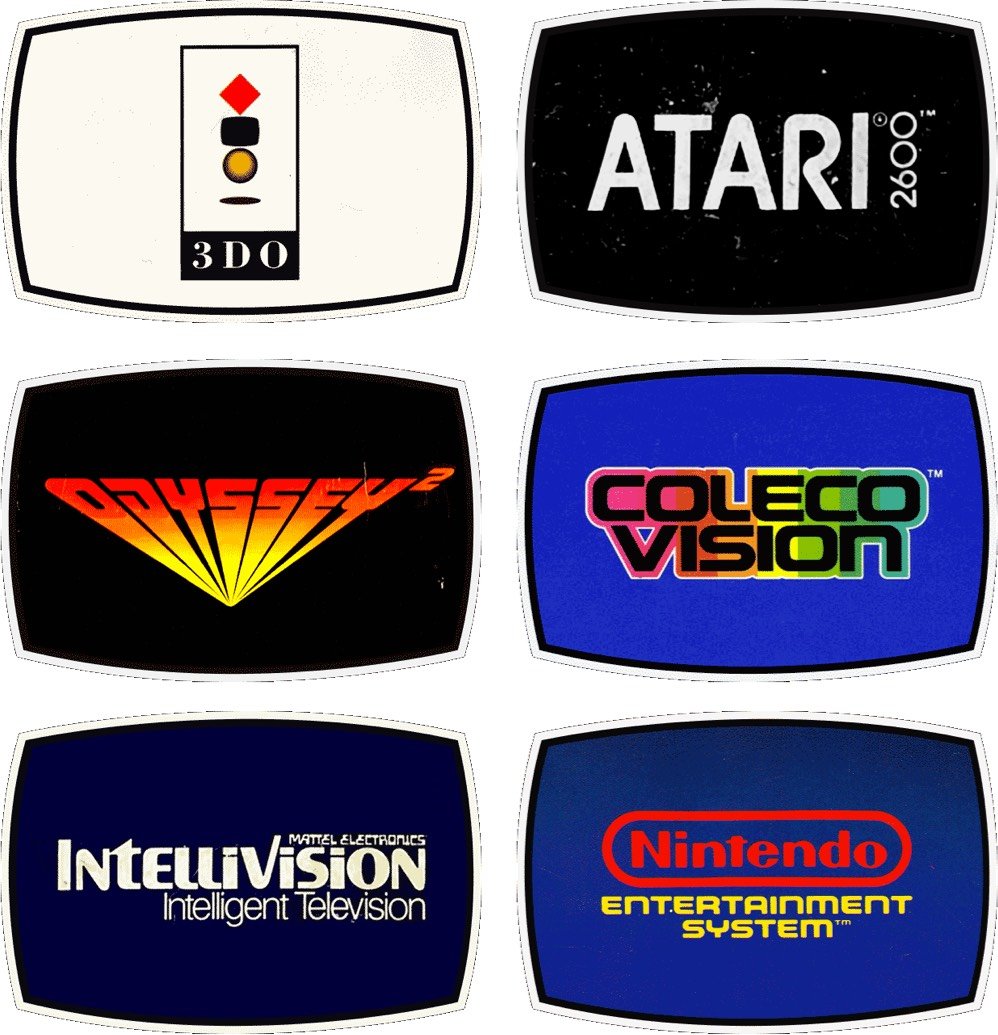
Reagan Ray has collected the logos of video game consoles from 1976 to the present. He ignores the first generation of consoles because there would have been too many to include. (Historical interlude: I didn’t know gaming consoles were broken down into generations. Apparently we’re in the 8th generation now — Wii U, PS4, Xbox One, and Switch.)
Bikes Cosplay As Flatscreen TVs to Limit Shipping Damage
I love this. Bike retailer Vanmoof noticed that a lot of the bikes they shipped to customers in the US arrived damaged. Figuring that package handlers would be more gentle if they thought they were moving fragile electronics, they started printing an illustration of a flatscreen TV on their packages.
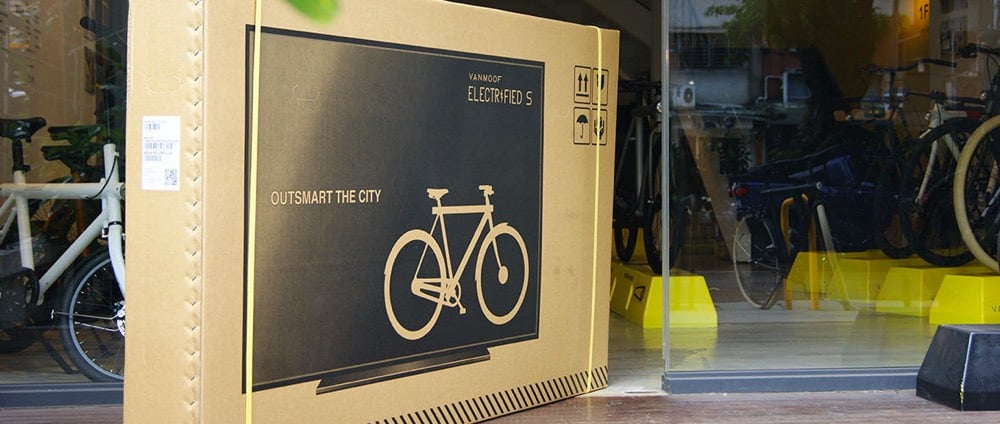
That small tweak had an outsized impact. Overnight our shipping damages dropped by 70-80%. We sell 80% of our bicycles online, which means we still print TVs on our boxes. More than 60,000 of them have now been shipped directly to our riders worldwide.
Super clever. (via why is this interesting?)
Bond film anagrams. “English Tutor Hoedown” from “The World Is Not Enough” made me LOL.
Leaked emails sent by WH advisor Stephen Miller in 2015/16 included praise for “xenophobic conspiracy theories and eugenics-era immigration laws that Adolf Hitler lauded in ‘Mein Kampf.’” What an awful human being.
A Curator Boyfriend Is The Hottest Accessory For 2020. Do web curators count? *bats eyelashes*
What Would Mister Rogers Do?
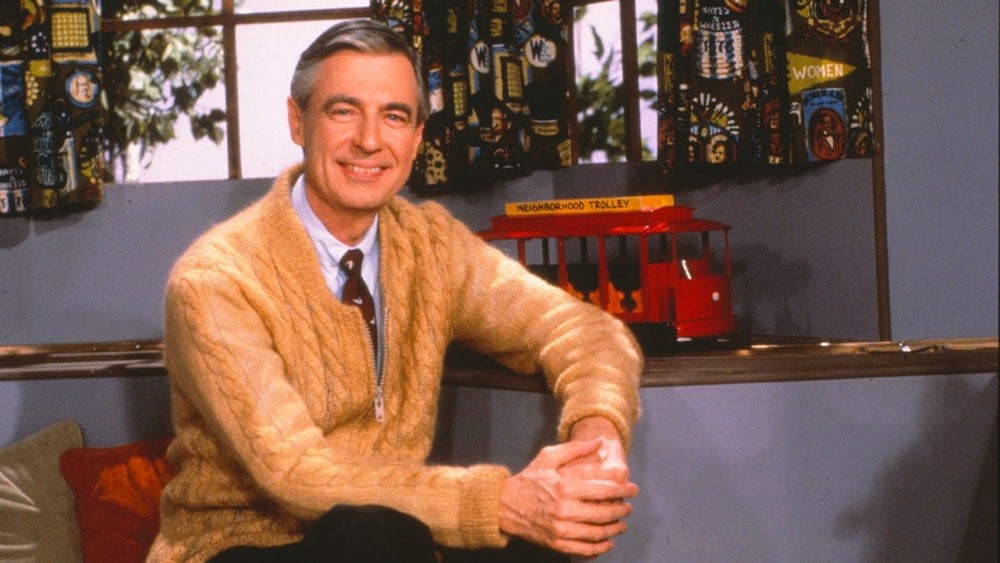
In 1998, Tom Junod wrote an article for Esquire about Fred Rogers. It is a particular favorite of mine and if you’ve never read it, I would recommend setting aside some time soon to do so.
Koko weighed 280 pounds because she is a gorilla, and Mister Rogers weighed 143 pounds because he has weighed 143 pounds as long as he has been Mister Rogers, because once upon a time, around thirty-one years ago, Mister Rogers stepped on a scale, and the scale told him that Mister Rogers weighs 143 pounds. No, not that he weighed 143 pounds, but that he weighs 143 pounds…. And so, every day, Mister Rogers refuses to do anything that would make his weight change — he neither drinks, nor smokes, nor eats flesh of any kind, nor goes to bed late at night, nor sleeps late in the morning, nor even watches television — and every morning, when he swims, he steps on a scale in his bathing suit and his bathing cap and his goggles, and the scale tells him that he weighs 143 pounds. This has happened so many times that Mister Rogers has come to see that number as a gift, as a destiny fulfilled, because, as he says, “the number 143 means ‘I love you.’ It takes one letter to say ‘I’ and four letters to say ‘love’ and three letters to say ‘you.’ One hundred and forty-three. ‘I love you.’ Isn’t that wonderful?”
The article has been adapted into a movie called A Beautiful Day in the Neighborhood; it stars Tom Hanks and will be out in two weeks time. Here’s a recently trailer — my skepticism about Tom Hanks playing Rogers is fading:
Junod recently wrote a piece about his friendship with the television icon, which began with the writing of the Esquire piece, continued until Rogers’ death in 2003, and clearly still reverberates in his life.
What would Fred Rogers — Mister Rogers — have made of El Paso and Dayton, of mass murder committed to fulfill the dictates of an 8chan manifesto? What, for that matter, would he have made of the anti-Semitic massacre that took place last fall in his real-life Pittsburgh neighborhood of Squirrel Hill? The easy answer is that it is impossible to know, because he was from a different world, one almost as alien to us now as our mob-driven world of performative slaughters would be to him. But actually, I think I do know, because when I met him, one of the early school shootings had just taken place, in West Paducah, Kentucky — eight students shot while they gathered in prayer. Though an indefatigably devout man, he did not attempt to characterize the shootings as an attack on the faithful; instead, he seized on the news that the 14-year-old shooter had gone to school telling his classmates that he was about to do something “really big,” and he asked, “Oh, wouldn’t the world be a different place if he had said, ‘I’m going to do something really little tomorrow’?” Fred decided to devote a whole week of his television show, Mister Rogers’ Neighborhood, to the theme of “little and big,” encouraging children to embrace the diminutive nature of their bodies and their endeavors — to understand that big has to start little.
The whole piece is great, but the latter half, where Junod writes about Rogers’ complicated legacy, the failure of his grand task, and how the people who idolize him today might nevertheless find it difficult to follow his example…well, I’m going to be thinking about that for awhile.
The U.S. Detained a Record 69,550 Migrant Children This Year. “The nearly 70,000 children who spent time in detention in the U.S. is more than anywhere else in the world.”
Neutron Stars and Nuclear Pasta. Yummy!
The latest video from Kurzgesagt is a short primer on neutron stars, the densest large objects in the universe.
The mind-boggling density of neutron stars is their most well-known attribute: the mass of all living humans would fit into a volume the size of a sugar cube at the same density. But I learned about a couple of new things that I’d like to highlight. The first is nuclear pasta, which might be the strongest material in the universe.
Astrophysicists have theorized that as a neutron star settles into its new configuration, densely packed neutrons are pushed and pulled in different ways, resulting in formation of various shapes below the surface. Many of the theorized shapes take on the names of pasta, because of the similarities. Some have been named gnocchi, for example, others spaghetti or lasagna.
Simulations have demonstrated that nuclear pasta might be some 10 billion times stronger than steel.
The second thing deals with neutron star mergers. When two neutron stars merge, they explode in a shower of matter that’s flung across space. Recent research suggests that many of the heavy elements present in the universe could be formed in these mergers.
But how elements heavier than iron, such as gold and uranium, were created has long been uncertain. Previous research suggested a key clue: For atoms to grow to massive sizes, they needed to quickly absorb neutrons. Such rapid neutron capture, known as the “r-process” for short, only happens in nature in extreme environments where atoms are bombarded by large numbers of neutrons.
If this pans out, it means that the Earth’s platinum, uranium, lead, and tin may have originated in exploding neutron stars. Neat!
Birds can get drunk from berries and tree fruit that ferment after the first frost, causing unsafe flight. The solution: a bird drunk tank.
A Playlist of Anthony Bourdain’s Favorite Songs
Working from a variety of interviews and articles about the chef, writer, and TV star, the crew at Far Out magazine compiled a playlist of Anthony Bourdain’s favorite songs.
It’s well-known that Bourdain was a champion of New York’s punk movement, he was often cited as saying that both chefs and musicians worked in similar undulating patterns. They were nightwalkers, the working men of the dark streets of New York’s bubbling underbelly. It was a theory that Bourdain took with him wherever he went. Whether he was reviewing a restaurant, often commenting on the music being played in the dining room as much as the food, or speaking with the numerous musicians and icons that littered his show ‘Parts Unknown’, Bourdain was always a muso.
For the PBS show he produced, The Mind of a Chef, Bourdain shared a 25-song playlist called Anthony Bourdain’s Music to Cook By.
Musicians on these playlists include The Velvet Underground, Pretenders, Beastie Boys, and Bob Dylan. (thx, amy)
Update: Here are all the songs from both playlists in one Apple Music playlist. (thx, @billweye)
Borderlands, Communities Connected Across the US/Mexico Border Wall
You may remember the Border Wall Seesaw implemented by activist architects Ronald Rael and Virginia San Fratello earlier this year; they installed seesaws through the US/Mexico border wall, enabling people from both countries to play together on them.
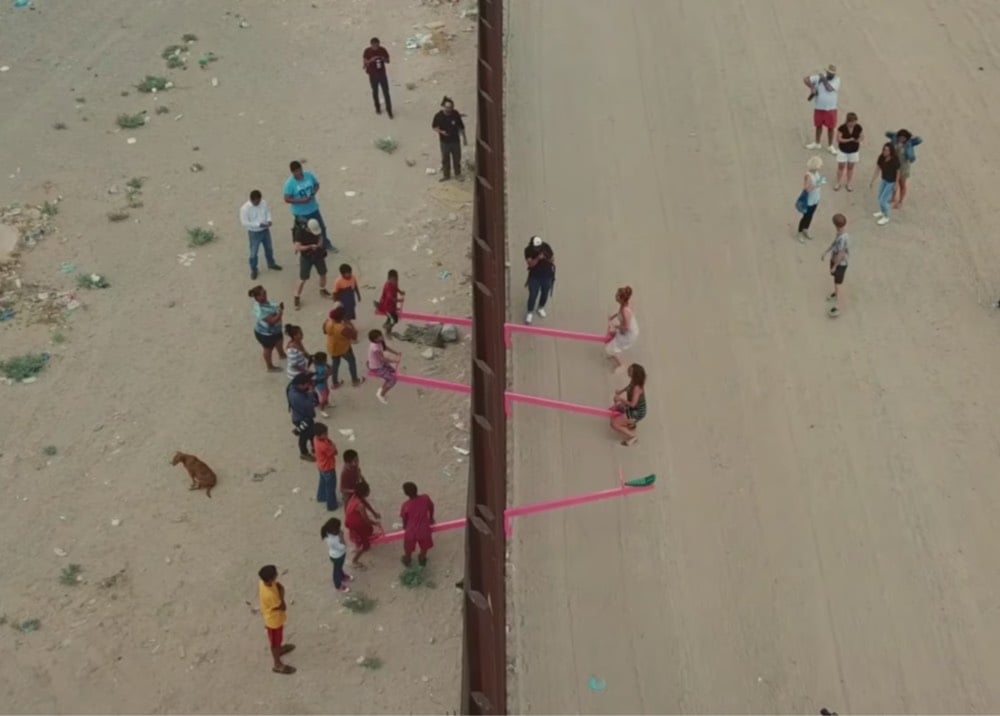
This short documentary called Borderlands follows Rael to three communities along the wall — San Diego & Tijuana, Brownsville & Matamoros, El Paso & Juárez (where he installed the seesaws) — where the connections between the US & Mexican sides persist and flourish despite their artificial separation.
Rael is well aware that, not too long ago, the boundary between the United States and Mexico, which is now delineated by more than seven hundred miles of fencing, was an open frontier, dotted with stone monuments. His book “Borderwall as Architecture” makes clear that the billions of dollars the U.S. government has spent on curbing migration and enhancing border security have done little to deter those intent on crossing by foot, using wooden ladders and ramps, or through tunnels. Decades of flawed policies suggest that the building of a grand wall is entirely divorced from the reality on the ground.
See also Best of Luck With the Wall, Josh Begley’s satellite image tour of the wall from the Pacific to the Gulf.
A Fresh Look for The Atlantic
The Atlantic launched a new visual identity the other day, complete with a new logo, custom typeface, updated website, and iOS app. Here’s the first cover carrying the new look:
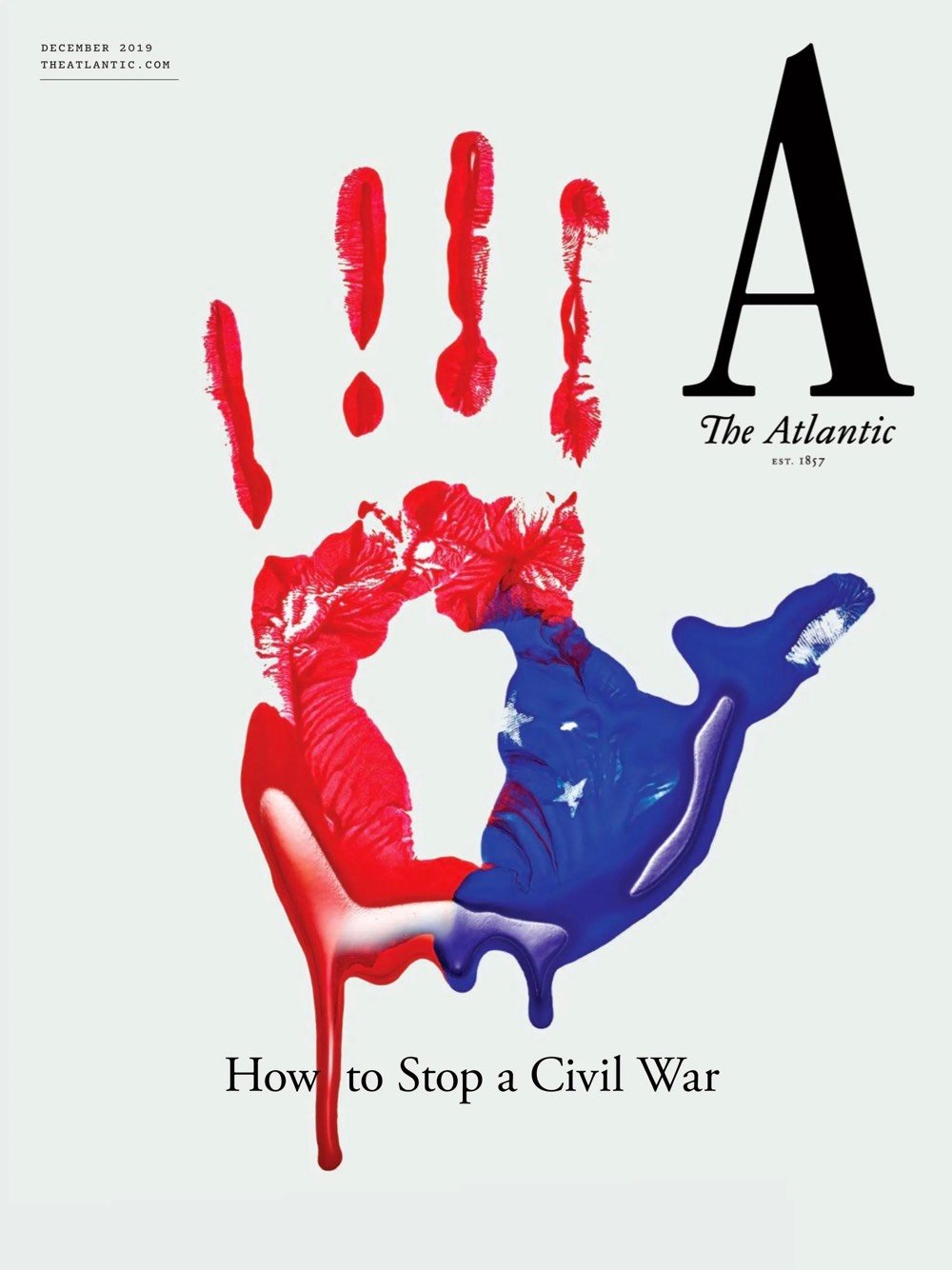
The effort was led by Peter Mendelsund and his senior art director Oliver Munday. You can hear the pair talk a bit about their process here:
And more from Mendelsund in this conversation with editor-in-chief Jeffrey Goldberg:
My favorite kind of design is a kind of time-released design, where you look at something and you have an immediate impression of it, and then you, upon further reflection, find something in the design that adds to or subverts that first impression.
Really nice work and methodology behind it. Hearing designers talk about how they approach their work always makes me miss practicing design on a daily basis, a former vocation of mine that seems very very far away these days.
Incredible Low-Angle Satellite Photo of NYC

That’s much of Manhattan, Brooklyn, and Queens captured by Maxar’s Worldview-3 satellite, but at an unusually low angle. Here’s a closer view of the southern tip of Manhattan:

Says Daily Overview of the shot:
This particular shot is made possible due to the focal length of the camera in this satellite that is roughly 32 times longer than that of a standard DSLR camera.
I don’t know what practical value low-angle satellite photos have, but they sure are beautiful.
Encyclopedia Brown and the Problem with the Mona Lisa
Ok, this post doesn’t have anything to do with boy detective Encyclopedia Brown…I just needed him for the title. In the NY Times, art critic Jason Farago argues that in order to improve the visitor experience at the Louvre, the Mona Lisa and her smile have got to go.
Yet the Louvre is being held hostage by the Kim Kardashian of 16th-century Italian portraiture: the handsome but only moderately interesting Lisa Gherardini, better known (after her husband) as La Gioconda, whose renown so eclipses her importance that no one can even remember how she got famous in the first place.
Some 80 percent of visitors, according to the Louvre’s research, are here for the Mona Lisa — and most of them leave unhappy. Content in the 20th century to be merely famous, she has become, in this age of mass tourism and digital narcissism, a black hole of anti-art who has turned the museum inside out.
Enough!
I visited the Louvre back in 2017 and the Mona-driven crowds were very distracting. I wrote a short review for my media diet:
The best-known works are underwhelming and the rest of this massive museum is overwhelming. The massive crowds, constant photo-taking, and selfies make it difficult to actually look at the art. Should have skipped it.
The Louvre is actually not a good place to look at art and if moving the Mona Lisa to a dedicated gallery elsewhere can help solve that problem, they should do it. (via @fimoculous)
Mike Bostock wrote a tutorial on how to make animated bar chart races, including code you can fork and drop your data into. What a resource!
How to Buy Drugs
The London Review of Books is not normally where one turns for advice on how to cop, but Misha Glenny (author of DarkMarket: How Hackers Became the New Mafia and Callum Lang recently wrote a piece for them called How to Buy Drugs that summarizes how the the customer-facing segment of the global drug market presently functions, with a special emphasis on distribution via the dark web. The improvement in customer service driven by dark web markets is fascinating:
The internet has dramatically improved the experience of drug buyers. The market share of a dark web outlet depends almost entirely on its online reputation. Just as on Amazon or eBay, customer reviews will describe the quality of purchased products as well as reporting on shipping time and the responsiveness of vendors to queries or complaints. If drugs that a buyer has paid for don’t turn up — as once happened to Liam, the Manchester student — a savvy vendor will reship the items without asking for further payment, in the hope of securing the five-star customer reviews they depend on.
As a consequence, the drugs available to the informed buyer are of a higher quality than ever before. They are also safer. The administrators of DNStars.vip — a site on the open web which you don’t need Tor to visit — pose as ordinary users in order to buy samples of popular drugs from major vendors. They then have the drugs chemically tested to see whether they match the seller’s description.
The dark web demonstrates the promise and peril of technology (and capitalism tbh) in a nutshell: lower prices & better quality goods for some (or even many) people but all sorts of hidden nastiness behind the scenes doing real and often unacknowledged harm to society.
AT&T Exec Predicted the Smartphone in 1953
In an April 1953 newspaper article in the Tacoma News Tribune, Mark Sullivan made an uncannily accurate prediction about the future of the telephone.
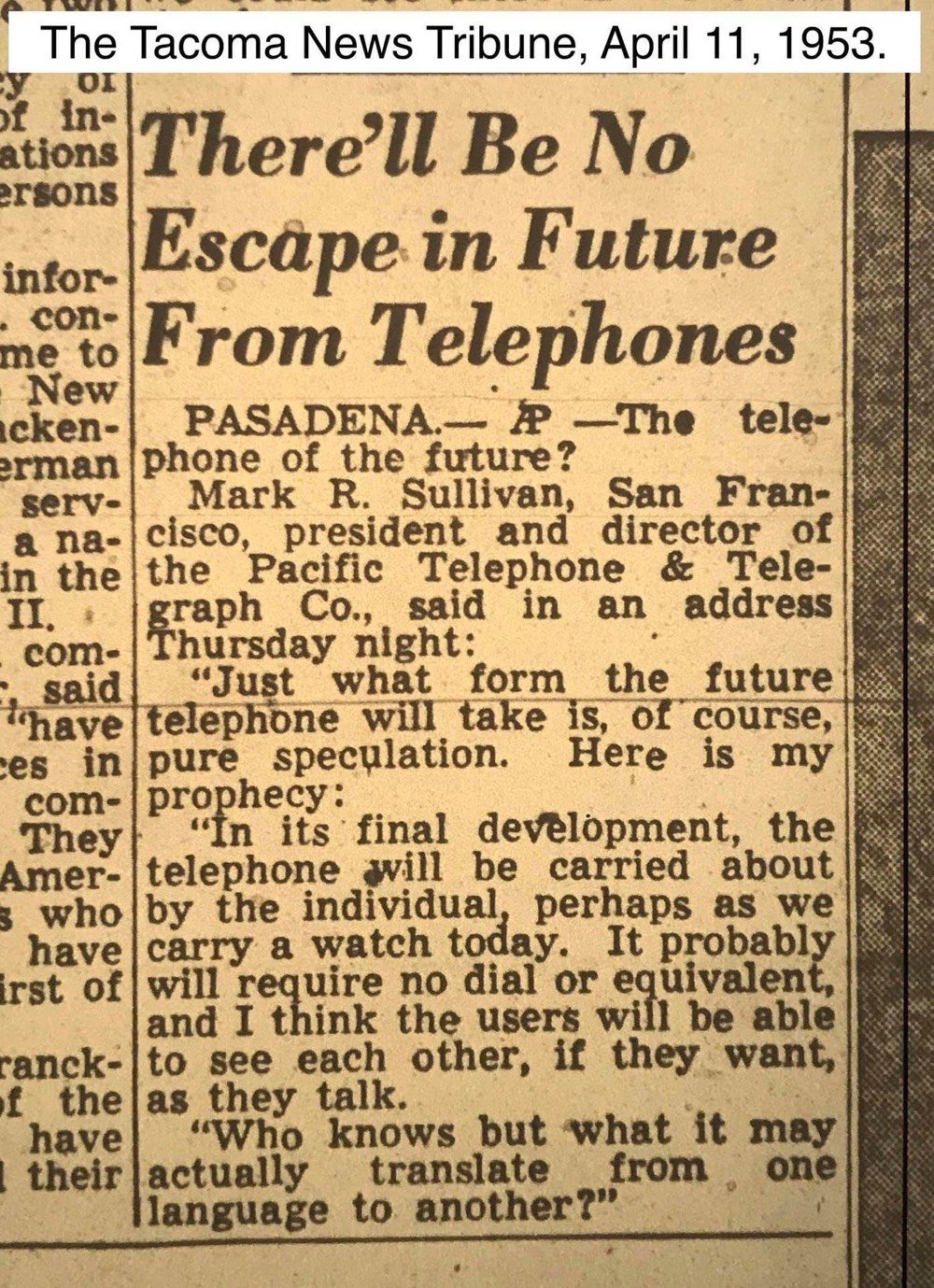
In its final development, the telephone will be carried about by the individual, perhaps as we carry a watch today. It probably will require no dial or equivalent, and I think the users will be able to see each other, if they want, as they talk.
The curious use of the word “users” made me think this was a hoax, but Snopes says it’s genuine. Anyway, Nikola Tesla beat Sullivan to the punch with his 1926 wireless vision of the world:
We shall be able to communicate with one another instantly, irrespective of distance. Not only this, but through television and telephony we shall see and hear one another as perfectly as though we were face to face, despite intervening distances of thousands of miles; and the instruments through which we shall be able to do his will be amazingly simple compared with our present telephone. A man will be able to carry one in his vest pocket.
(via @ma11en)
James Dean will star in a Vietnam-era war movie called Finding Jack. “Dean’s performance will be constructed via ‘full body’ CGI using actual footage and photos. Another actor will voice him.”
Han Solo with a hat is just a generic cowboy. “Sometimes good design is the act of not putting a hat on someone.”
The Berlin Wall of Light

This photo of Berlin, Germany at night was taken in 2012 from the International Space Station. Almost 25 years after the fall of the Berlin Wall, you can still see the division from space because of the colors of the different street lights used in the East and West.
Daniela Augenstine, of the city’s street furniture department, says: “In the eastern part there are sodium-vapour lamps with a yellower colour. And in the western parts there are fluorescent lamps — mercury arc lamps and gas lamps — which all produce a whiter colour.” The western Federal Republic of Germany long favoured non-sodium lamps on the grounds of cost, maintenance and carbon emissions, she says.
A night photo of Berlin from 2016 confirms that street light replacement is happening in the city, albeit slowly.
See also a photo of NYC from 2015 taken from the ISS, which shows the replacement of the city’s sodium vapor street lights with blue-glowing LEDs.
The new LEDs may be environmentally sensitive, but they are also optically harsh.
“The old lights made everybody look bad,” said Christopher Stoddard, an architect, who lives at the corner of Fuller Place. “But these are so cold and blue, it’s like ‘Night of the Living Dead’ out there.”
“We’re all for saving energy,” his wife, Aida Stoddard, also an architect, said, “but the city can do so much better.”
A few blocks away, Rose Gallitelli taped up black garbage bags on her bedroom windows so that she could sleep. “They’re the heavy-duty kind,” she said.
Brent Simmons celebrates 20 years of blogging. “The best time to start a blog is 20 years ago. The second-best time is today.”
The Legacy of Philip Glass

From the NY Times, Philip Glass Is Too Busy to Care About Legacy.
“I’m pragmatic,” Mr. Glass said. “I don’t know what’s going to happen in 10 years. We don’t even get to know what’s going to happen after someone dies. We need to wait until everyone who knew them is dead, too.”
If that’s true, it won’t be until nearly 2100 when a full measure of Mr. Glass’s footprint will be possible. But some weighing can start now. The most instantly recognizable voice in contemporary music, he opened a new chapter in operatic history, pushing the bounds of duration and abstraction. At a time when the most lauded composers disdained overproduction, Mr. Glass wrote unashamedly for everyone and everything — and all stubbornly in the distinctive style he created, establishing a model for serious artists moving from the opera house to the concert hall to the film studio, garnering both Met commissions and Academy Award nominations.
But if the question is whether, a century from now, his operas will get new productions, his symphonies will circulate more frequently, or pianists will take on his études, Mr. Glass couldn’t care less.
“I won’t be around for all that,” he said. “It doesn’t matter.”
Austin Kleon expanded on this piece with some thoughts about lineage vs legacy.
I like this idea of thinking about lineage vs. legacy, because it means you can sort of reframe any worrying about immortality and how you’re going to project yourself into the future, and think more about what you’re taking from the past and what you’re adding to it that creates a more interesting and helpful present.
Painting with CSS

Believe it or not, the image above was made using only HTML & CSS by developer Diana Smith. It’s coded by hand and built for Chrome — you can check it out here. The source code and accompanying CSS is not as extensive as you might think.
As Andy Baio notes, Smith’s creations render less well in other browsers. Who knew Internet Explorer 8 for Windows 7 was a Cubist master?

You can view several other of Smith’s creations here, here, and here.
See also Tatsuo Horiuchi, the Excel Spreadsheet Artist. (via waxy)
The Colossal is one of my favorite websites and they recently introduced a membership program. If you’re a Colossal reader, join me in supporting their efforts!
Highlights from The Fifth Season by N.K. Jemisin
The Fifth Season is the first book in the Broken Earth trilogy of fantasy/science fiction novels by N.K. Jemisin. Each book in the trilogy won the Hugo Award for best novel the year after its release. It took me awhile to get into, but once I was hooked the book went pretty quickly. Here are the passages I highlighted on my Kindle for one reason or another. (See past book highlights.)
Note: This ebook didn’t have real page numbers, only Kindle location markers. Sorry about that.
Further note: I’ve been reading Kindle books checked out from my local library via Libby. It’s been challenging because the loan period is typically not long enough for how slowly I read. But I did discover that you can view your notes and highlights for all of your Kindle books, including expired ones, so I don’t need to worry about exporting them before my loan ends.
Location 52 (I like the obviousness of the opening lines):
Let’s start with the end of the world, why don’t we? Get it over with and move on to more interesting things.
Location 102:
There is an art to smiling in a way that others will believe. It is always important to include the eyes; otherwise, people will know you hate them.
Location 208 (see Addressing Climate Change Is Not About Saving the Planet):
When we say “the world has ended,” it’s usually a lie, because the planet is just fine.
Location 1,161:
The people we love are the ones who hurt us the most, after all.”
Location 1,488 (saving this for the next time someone argues about the “natural order of things” or similar bullshit):
Location 2,061 (on surviving in the immediate aftermath of loss):Survival doesn’t mean rightness. I could kill you right now, but that wouldn’t make me a better person for doing so.”
So you must stay Essun, and Essun will have to make do with the broken bits of herself that Jija has left behind. You’ll jigsaw them together however you can, caulk in the odd bits with willpower wherever they don’t quite fit, ignore the occasional sounds of grinding and cracking. As long as nothing important breaks, right? You’ll get by. You have no choice.
Location 2,298 (emphasis mine):
Once Damaya would have protested the unfairness of such judgments. The children of the Fulcrum are all different: different ages, different colors, different shapes. Some speak Sanze-mat with different accents, having originated from different parts of the world. One girl has sharp teeth because it is her race’s custom to file them; another boy has no penis, though he stuffs a sock into his underwear after every shower; another girl has rarely had regular meals and wolfs down every one like she’s still starving. (The instructors keep finding food hidden in and around her bed. They make her eat it, all of it, in front of them, even if it makes her sick.) One cannot reasonably expect sameness out of so much difference, and it makes no sense for Damaya to be judged by the behavior of children who share nothing save the curse of orogeny with her.
Location 2,311:
The world is not fair, and sometimes it makes no sense.
Location 2,703:
“Home is people,” she says to Asael, softly. Asael blinks. “Home is what you take with you, not what you leave behind.”
Location 3,359 (the uncanny valley of hyper-graceful motion):
The stone eater’s arm rises, so steadily that the motion surpasses graceful and edges into unnatural.
Location 3,546:
Friends do not exist. The Fulcrum is not a school. Grits are not children. Orogenes are not people. Weapons have no need of friends.
Location 4,155 (out of context this is weird but it made me lol):
Did you need a dick — any dick, even my mediocre, boring one — that bad?”
Location 4,314:
We are creatures born of heat and pressure and grinding, ceaseless movement. To be still is to be… not alive.
Location 4,369:
She loves her son. But that doesn’t mean she wants to spend every hour of every rusting day in his presence.
Location 4,446 (ISO an affection dihedron):
They can’t stand sex with each other directly, but vicariously it’s amazing. And what do they even call this? It’s not a threesome, or a love triangle. It’s a two-and-a-half-some, an affection dihedron.
Fewer highlights than usual…lots of plot = fewer highlights, I think. I enjoyed reading this book, but it also didn’t propel me right into the next book in the series (unlike The Three-Body Problem). Maybe in a month or two?
Climate scientists badly underestimated how quickly the effects of climate change would arrive. Here’s how they got it wrong. “Many worst-case scenarios from that time are now realities.”
Steve Wozniak & David Heinemeier Hansson allege that Goldman Sachs’ Apple Card algorithm discriminates against women applicants. “We love our technology but we are no longer in control.”
The Gorgeous Metro Stations of Uzbekistan



Once a stop along the Silk Roads from Europe to Asia, the city of Tashkent, Uzbekistan boasts many cultural treasures but perhaps the most unlikely is the city’s metro system and its colorful & artistic stations. In 2018, not long after a photography ban was lifted, Amos Chapple took a series of photos of Tashkent’s metro.
See also Photos of Grand Soviet-Era Subway Stations. (via @bennglazier)
A Solar Eclipse from the Edge of Space
For a BBC series called Earth from Space, the team at Sent Into Space attached a VR camera to a balloon and sent it up to an altitude of about 20 miles — high enough to see the blackness of space and Earth’s curvature — to take a 360° video of the total solar eclipse that occurred in August 2017. The video above is a hyperlapse of the event while this one from the BBC is slower, annotated, and in full 360° VR.
See also Patrick Cullis’ epic adventure in trying to snap a photo of the total solar eclipse from the edge of space. (via @alexkorn)
“I Was the Fastest Girl in America, Until I Joined Nike”
Mary Cain was on her way — and quickly. As detailed in a 2015 NY Times piece by Elizabeth Weil, Cain ran a mile in 5:03 as a 7th grader and by the time she was a high school sophomore, ran the 1,500 meters in 4:11.01. Her high school track coach didn’t know how to coach her properly, so when Nike called, she joined a legendary coach training a team of fellow track stars to see how far she could go. And according to Cain, that’s when everything fell apart.
A big part of this problem is that women and girls are being forced to meet athletic standards that are based on how men and boys develop. If you try to make a girl fit a boy’s development timeline, her body is at risk of breaking down. That is what happened to Cain.
After months of dieting and frustration, Cain found herself choosing between training with the best team in the world, or potentially developing osteoporosis or even infertility. She lost her period for three years and broke five bones. She went from being a once-in-a-generation Olympic hopeful to having suicidal thoughts.
This May, at the age of 23, Cain ran competitively for the first time in 2.5 years and won a four-mile race in NYC.
Update: Shannon Palus writing at Slate about Cain’s recent revelations:
Cain’s story might be superlatively horrifying, and her accusations go well beyond simple misunderstanding of female biology. (They include her coaches essentially ignoring her admission that she was depressed and cutting herself. The Oregon Project was shut down in October, after Salazar was banned from coaching for doping violations.) But the treatment of her weight, and the lack of understanding of how extreme workouts were affecting her body, is part of a much broader problem, and not just one that affects women with large brand partnerships. Many, if not most, female runners, from elite athletes to those training for their first 5Ks, will suffer at some point because of a lack of recognition of their physical needs, and how their bodies differ from men’s.
Update: In a Sports Illustrated article published today, eight other athletes corroborate Cain’s allegations of abuse.
Amid the fallout from Cain’s comments, Sports Illustrated contacted nine former Nike Oregon Project members, including Cain, about the culture under Salazar, and their accounts, extending back to 2008, validate her claims and paint a picture of a toxic culture where female athletes’ bodies were fair game to be demeaned publicly. Multiple authority figures appeared to lack certifications. Former team members now describe it, in retrospect, as “a cult.” Now leaders from the anti-doping world and even Salazar’s de facto successor as coach are calling for a third-party investigation of The Oregon Project.
I was talking with a friend about Cain’s story and how challenging the coach/athlete dynamic is. The nature of coaching is to help athletes to achieve things they cannot accomplish on their own, to push them past what they thought was their best. Pushing boundaries implies the need to be vulnerable, to embrace the unknown, to do things that you may not understand or want to do, and to trust your coach to have you do the correct uncomfortable & seemingly impossible things that will help you excel and not the wrong uncomfortable & seemingly impossible things that will damage your body and mind. From the outside or as an athlete in the midst of training, it can be tough to tell which is which. To have that trust betrayed must be devastating.
The best excuse for some internet wanderings

This “exit post” marks the end of my five days guest-editing this venerable and beloved blog, thanks to Jason for letting me play in this fantastic space for a third visit. It’s always quite a fun ride, and the best excuse for some internet wanderings.
I hope you enjoyed what I shared here. I encourage you to have a look at my newsletter Sentiers. Check out the archives and subscribe to keep up with where my curiosity takes me.
To recap and perhaps to give you a second chance at discovering them, here are some of my favourite posts. Every time I’m here I enjoy paying special attention to planes and space, as with Lifting bodies and the X-37B. There was something hopeful in Cleaning trash from rivers before it reaches the ocean. One of the most popular posts was The fantastic fungi pictures of Alison Pollack and it’s easy to see why, while Death Stranding’s world building intersects with fashion and design wasn’t as well shared but is a space I enjoyed looking at. I always end up writing about libraries, this time with Helsinki has a library to learn about the world, the city, and each other, and with another kind of library, The Internet Archive is now working to preserve vinyl LPs. Ok Google, cause some mischief and The Drone Chronicles 2001-2016 point to some interesting corners of technology.
The header image is from Xavi Bou’s Ornitographies.
Polygon looks at the past 10 years in pop culture
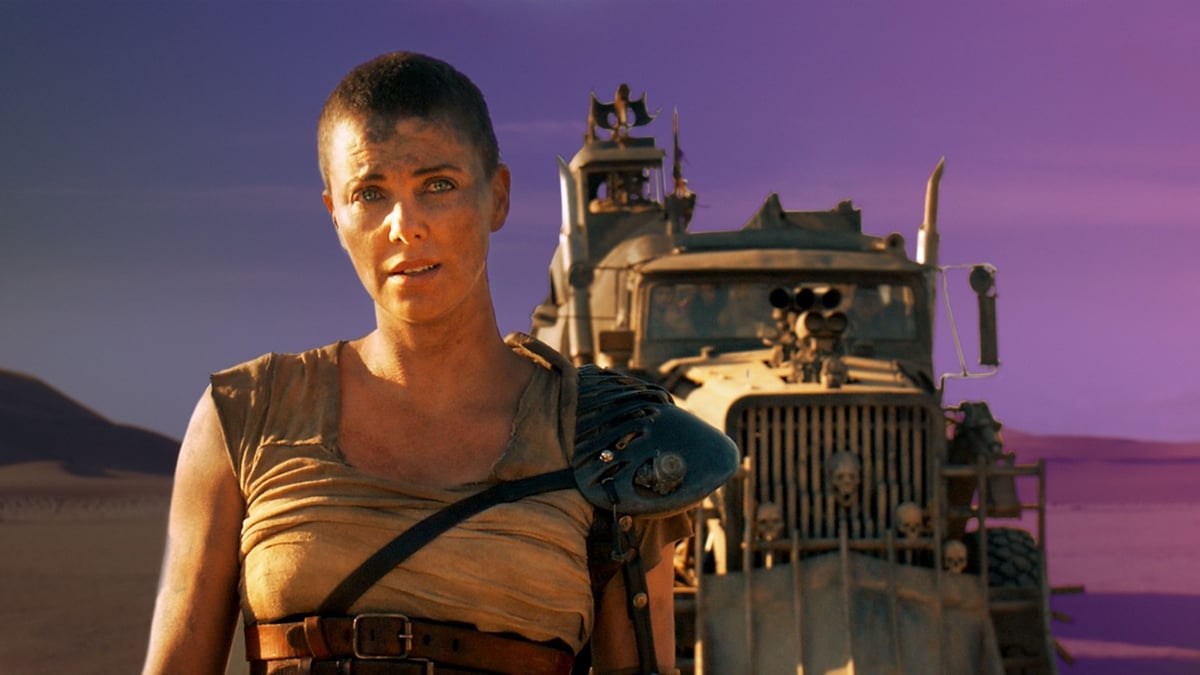
Is this the first salvo in the end of year barrage of reviews? Polygon are going all out anyway, with a review of the whole decade! “Looking back at the past 10 years in pop culture.” There’s lots to read and I can’t say I’ve gone over the whole thing yet but it’s a fun mix.
The second decade of the 21st century was marked by seismic shifts in media and entertainment — loot boxes, games as a service, esports, livestreaming, virtual reality, smartphones, streaming services, “binge” watching, cloud computing, corporate consolidation, and a blockbuster takeover of the box office. It’s tempting to dismiss those items as big-picture developments rather than changes that affect us personally. But as we increasingly rely on pop culture as the lens through which we process the world around us — and, as ever, a mirror that reflects that world back at us — it’s important to take a breath every so often to ponder how we got here and what it all means.
They’ve got a bunch of lists, some which are actually lists of lists by various team members, like The best movies of the 2010s (some surprising choices as well as some Fury Road and Spider-Man: Into the Spider-Verse), or doing one detailed selection like The best comics of the 2010s, and also some deeper dives in individual topics, like Why Minecraft is the most important game of the decade.
Counting Minecraft among the most influential games of the 2010s is a no-brainer. According to its developer, Mojang, Minecraft recently became the bestselling video game of all time, beating out Tetris by moving over 176 million units. Unlike Tetris, it hit that number in a single decade. (Emphasis mine.)
Communities facing relocation as they struggle with melting ground and a rising sea. “Pelly Island, a remote island about 100 kilometres west of Tuktoyaktuk, recede as much as 30-40 metres a year.”
Mona Lisa: Beyond the Glass, the Louvre’s first Virtual Reality project
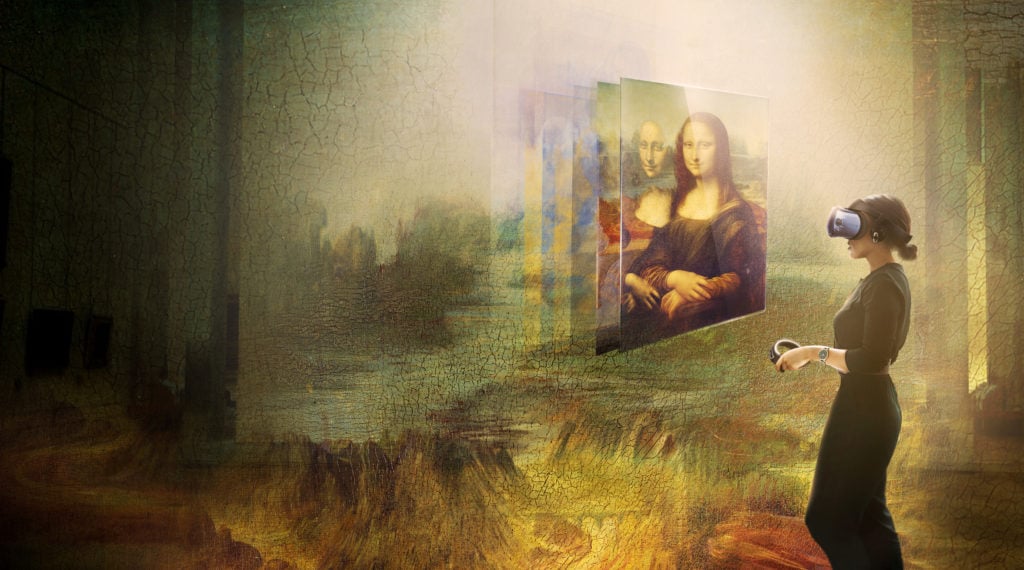
An incredible 80 percent of the Louvre’s 10 million yearly visitors find their way to the Salle des États to catch a glimpse of the Mona Lisa. It’s so popular that it wasn’t included in the ongoing Leonardo da Vinci exhibition, for fear that the bustle to the painting would make it “practically unvisitable.” The curators used the opportunity to put together the museum’s first-ever virtual reality project, offering visitors a seven-minute experience of a work titled Mona Lisa: Beyond the Glass.
Visitors can strap themselves into the state-of-the-art headsets and learn snippets of information about Leonardo’s famous sitter, Lisa del Giocondo, as well as his artistic method and the history of the painting. It will immerse them in what could be the surroundings beyond the frame of what is depicted in Leonardo’s masterpiece, and, at the end, invite them to climb aboard an imagined version of Leonardo’s visionary flying machine—a sketch of which is also included in the exhibition—and soar across the landscape surrounding Mona Lisa’s luxuriant loggia.
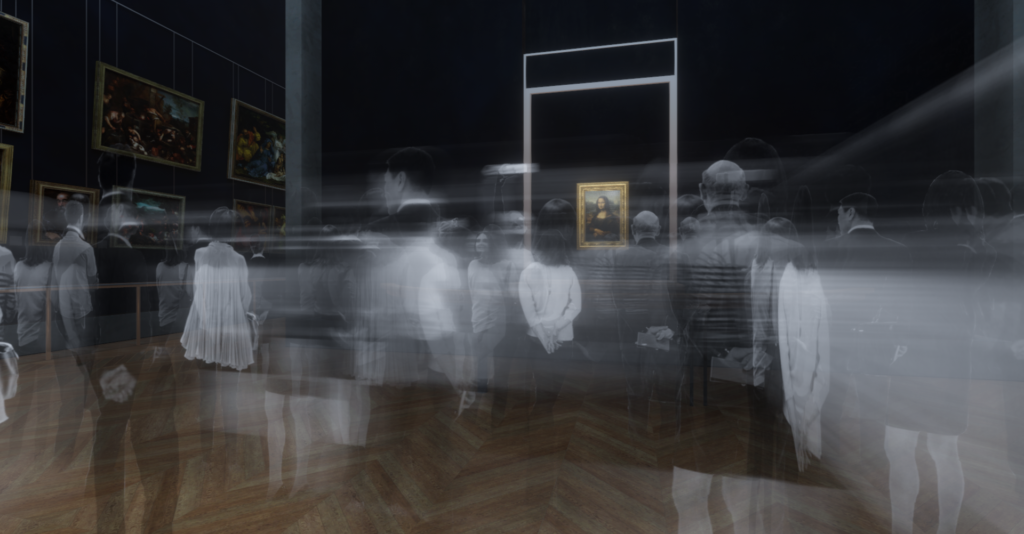
An interesting detail to this initiative is that although digital experiences like this are usually meant to broaden a museum’s public and draw more visitors, the Louvre definitely doesn’t need to be better known. They put this project together because “The museum still wants to amplify whatever it does beyond those who can actually set foot in the museum.”
The initiative is part of a broader plan to make culture accessible to a wider public. Efforts have been underway in France to redistribute some of its cultural resources around the country. The French culture minister Franck Riester plans to introduce a number of small-scale digital museums around France that will showcase high-resolution digital copies of works from the country’s 12 national public collections, including the Louvre, with people in remote regions. With more than $3 million invested in the plan, the small digital museums—dubbed “micro-folies”—are expected to number 1,000 within three years.
The ambitious plan to establish a National Park System in China
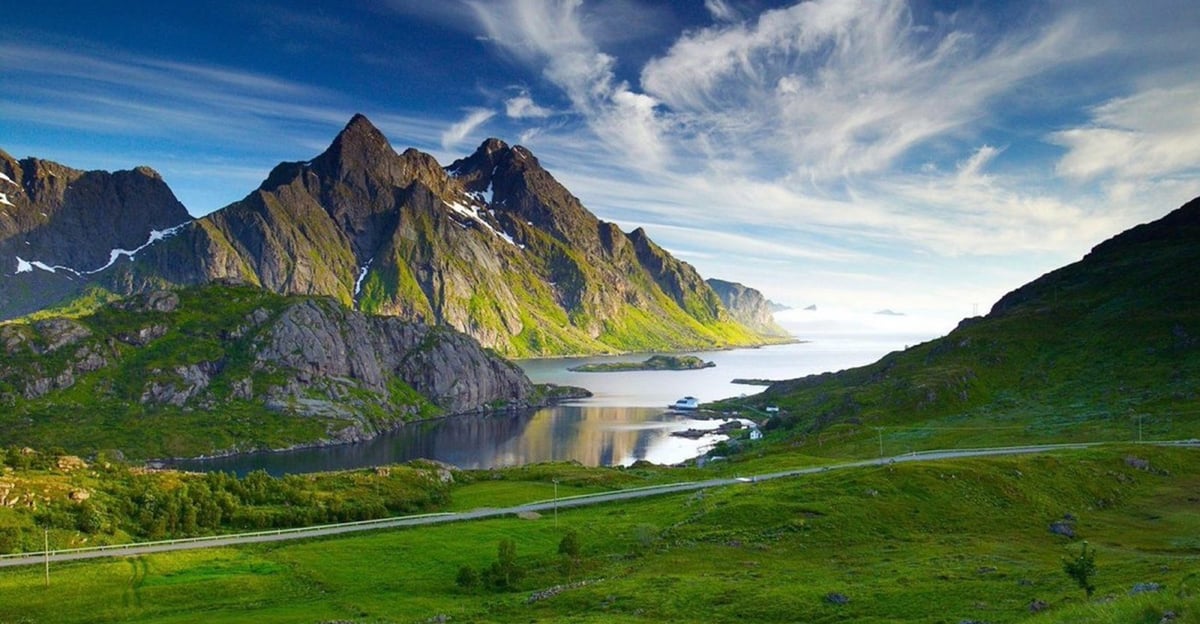
Sanjiangyuan in Qinghai is set to become China’s first national park, opening in 2020. It’s part of the Chinese government’s plan to follow the US model of national parks by replacing seven different departments with one, the National Park Administration.
Jonathan Jarvis, the Director of the United States National Park Service under President Obama, visited China to observe some of the past efforts and the new initiatives being put forth. Jarvis was interviewed by AJ Cortese at Pandaily.
Obviously China has had a high priority on economic development for a long time so it was actually refreshing to see them at least state politically, that they want conservation to be the priority. Because, frankly, if you’re going to have a real national park system it can’t just be about visitation or economical development and tourism it has to have a foundation in conservation and historical preservation as well.
We met with local mayors and provincial leaders and they clearly had gotten the message that they were now going to be evaluated in terms of their accomplishments and career status based on ecological conservation and not economic development. What’s interesting was they were asking us to help them figure out what that means because most of them had been trained professionally in economic development, which was to build something: a road, a hospital, a library or a school in these remote communities and now they were being challenged with ecological conservation at the same time as improving the lives of the local communities.
China has said politically that they want to have a complete national park system by 2030. Of course China is hosting the convention of biodiversity next year in October 2020, and I would anticipate that China will be announcing sometime in 2020, this sort of trajectory towards having a complete system with actual designation of at least the first slate, and then another slate and then another. They are trying to do what the US did over 100 years, starting in 1916, in just 10 years. This doesn’t surprise me because that’s kind of the way China does things.
(Emphasis mine.)
You’ve got to admire the dedication. A very, very detailed look at all the changes and additions to the emojis in iOS 13.2, including falafel, maté, and a gender-neutral zombie.
Privacy on DNA sites might be threatened by a newly granted warrant
20 million people (a figure for the US I imagine) have uploaded their genetic profiles to consumer DNA sites like Ancestry.com, 23andMe, and GEDmatch. The first two have pledged to keep their users’ genetic information private and the third severely restricted access. But a warrant granted in Florida might supersede their good intentions.
Last week, however, a Florida detective announced at a police convention that he had obtained a warrant to penetrate GEDmatch and search its full database of nearly one million users. Legal experts said that this appeared to be the first time a judge had approved such a warrant, and that the development could have profound implications for genetic privacy.
Other agencies are sure to try to get similar warrants, so lets not forget that at the scale these services have reached, there are now implications for everyone, not just those who sent their DNA for analysis.
If that comes to pass, the Florida judge’s decision will affect not only the users of these sites but huge swaths of the population, including those who have never taken a DNA test. That’s because this emerging forensic technique makes it possible to identify a DNA profile even through distant family relationships.
In 2018, California police used GEDmatch data to identify a man they believe is the Golden State Killer, Joseph James DeAngelo. Since then, other police forces have followed suit, turning tools meant to find relatives, into ones that can be used to search family trees for criminals.
Because of the nature of DNA, every criminal is likely to have multiple relatives in every major genealogy database. Without an outcry, Professor Murphy and others said, warrants like the one obtained by Detective Fields could become the new norm, turning all genetic databases into law enforcement databases.
Benjamin Sack’s impossible cityscapes
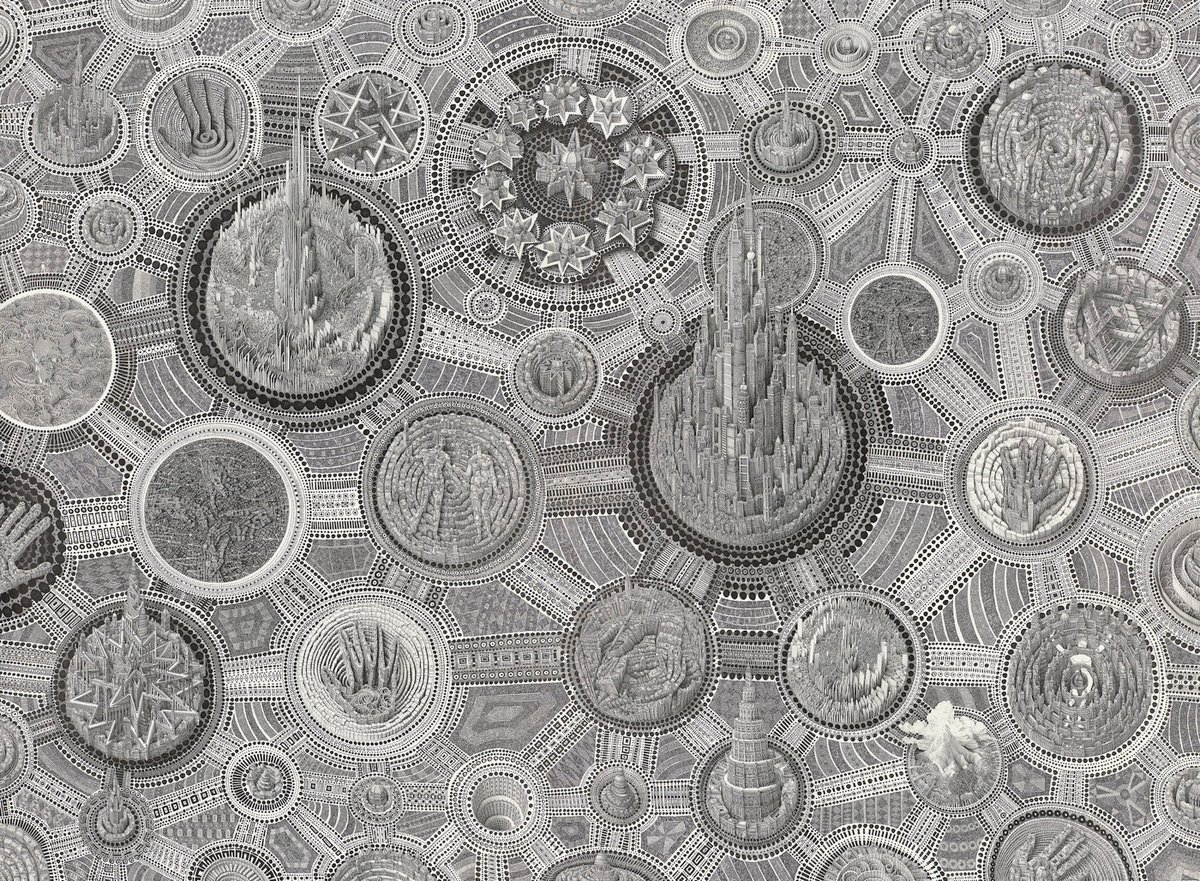
These are absolutely stunning! Piranesi meets Escher meets… reminds me of someone else I can’t put my finger on.
“Over many years my interest in architecture and cityscapes has evolved.” [These pieces have] “become a way and means of expressing the infinite, playing with perspective and exploring a range of histories, cultures, places.”

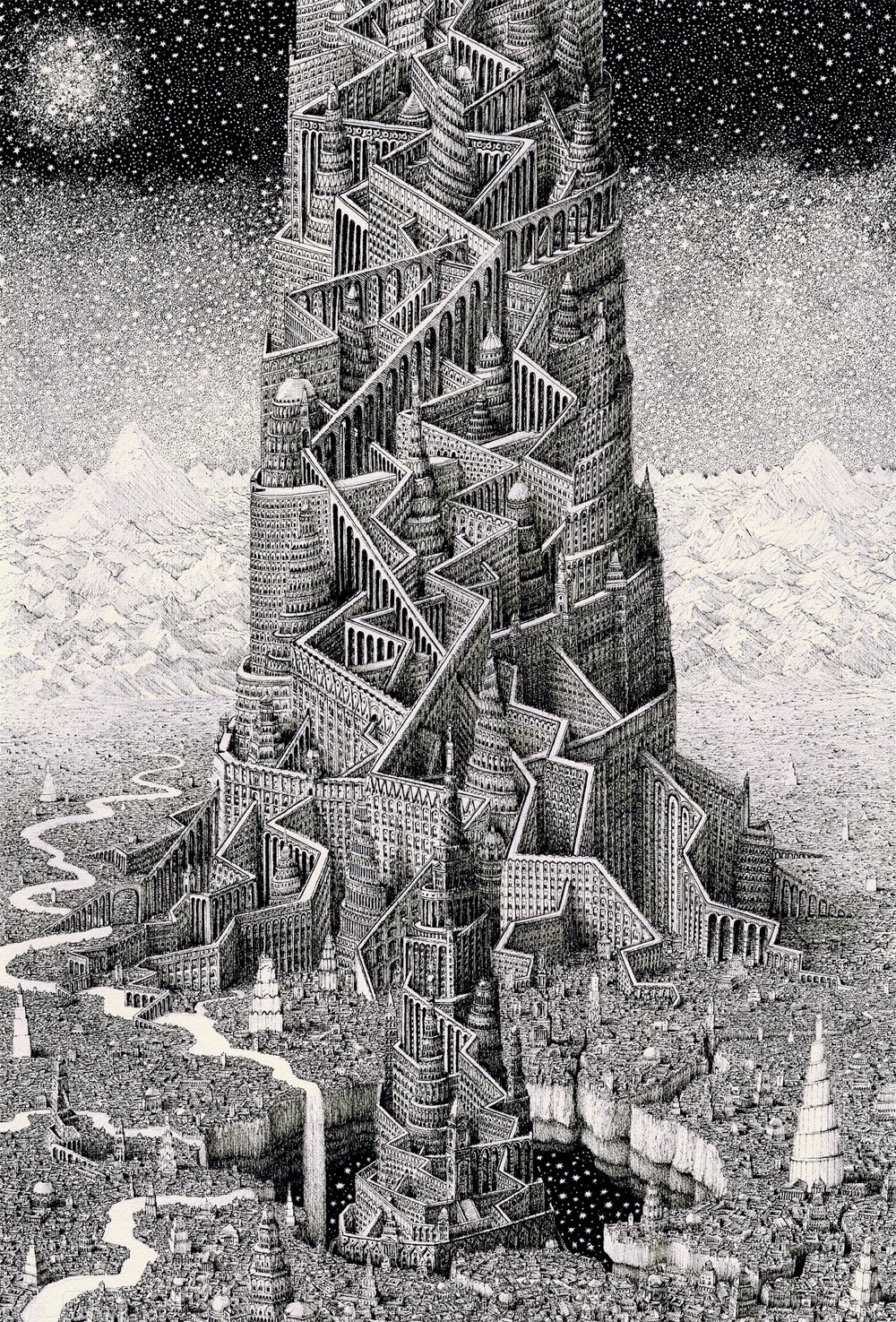
His exhibit in Berlin runs until January 22 2020.
Algorithmic entertainment is bringing dull sameness

Navneet Alang provides a good overview of the many ways in which the ever growing influence of various algorithms is transforming all forms of media, from motion smoothing, to “Spotify-core” music, to TikTok’s influence over length and memorable hooks.
The algorithmic delivery of music thus forms what, for Spotify, is a virtuous circle. But it also suggests that tech platforms don’t just deliver content, but that they shape it too, prioritizing quick hits and short tracks because those are the things that generate the most engagement.
Those platforms and their algorithms change not only the form of the content we consume but the way we consume it, like Netflix’s current test to allow speeding up of video playback, like some of us do when listening to podcasts.
Netflix is aware that people want to rush through content — not just to enjoy it, but also to then participate in the cultural conversation that’s around it. Is everyone at work talking about Succession, Fleabag, and that new true crime podcast, but you’re behind on all of them? Well, rip through them at double speed so you aren’t left out.
Alang argues that while we’ve always played around with how we read, view, or listen to art, we are now in front of something of a different magnitude.
But the sheer ubiquity of the streaming platforms for how we get content now suggests that the dominance of algorithms and their place in the attention economy aren’t entirely neutral or value-free. Disney, for example, is quietly placing classic Fox films into its so-called “vault,” where it hides movies from distribution for a while to drum up hype when they are re-released. One imagines this is so they can put them back on their forthcoming streaming service, to much delight.
Alas, as with so many things around the internet and “digital,” what was originally an opportunity for every little niche and taste to get its place in the sun, is instead being dumbed down into an “algorithmed” and business optimized mass of sameness.
Indiana Bell moved a functioning building in 1930

In 1930, Indiana Bell, a subsidiary of AT&T, needed a larger building for their headquarter. The problem? The old building needed to stay in operations at all times, providing an essential service to the city. Instead of tearing it down or simply moving to a new building, they decided to move it to a different part of the lot and build on the existing location. Just that.
The massive undertaking began on October 1930. Over the next four weeks, the massive steel and brick building was shifted inch by inch 16 meters south, rotated 90 degrees, and then shifted again by 30 meters west. The work was done with such precision that the building continued to operate during the entire duration of the move. All utility cables and pipes serving the building, including thousand of telephone cables, electric cables, gas pipes, sewer and water pipes had to be lengthened and made flexible to provide continuous service during the move. A movable wooden sidewalk allowed employees and the public to enter and leave the building at any time while the move was in progress. The company did not lose a single day of work nor interrupt their service during the entire period.
Incredibly most of the power needed to move the building was provided by hand-operated jacks while a steam engine also some support. Each time the jacks were pumped, the house moved 3/8th of an inch.


(via the excellent The Prepared newsletter)
Update: Using the sequence of photos of the move, Statistics_Data_Facts made some animated GIFs of the building’s pivot.
The Drone Chronicles 2001-2016

Quite an intriguing pair of books by graphic designer Rob van Leijsen have recently come out, documenting the evolution of drones, the changes in the technologies used, and changes in usage and spread.
The set is made up of a catalogue, documenting fifteen years of drones. “The models appearing in chronological order with a small photo and a list of data: their release date, price, speed, flight time, dimension, function(s), colours available, weight, etc.”
As you turn the pages, you see how the different uses of the technology evolve along parallel tracks: the commercial, the consumer and the military; the deadly, the useful and the purely entertaining.
The second is a journal, with a chronological selection of the most utterly striking stories involving drones and published during the same period.
By juxtaposing informative, technological and cultural stories, the Journal paints an ever changing portrait of a society trying to get to grips with drones. From the very mundane (spraying pesticides over crops or delivering parcels) to the techno-solutionism, the humanitarian and the artistic.
The books close in 2016, which lines up relatively well with the end of the major hype around drones.
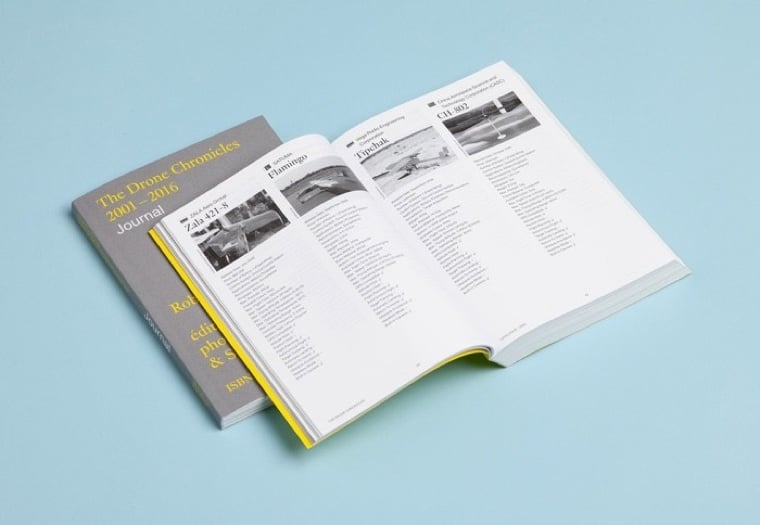
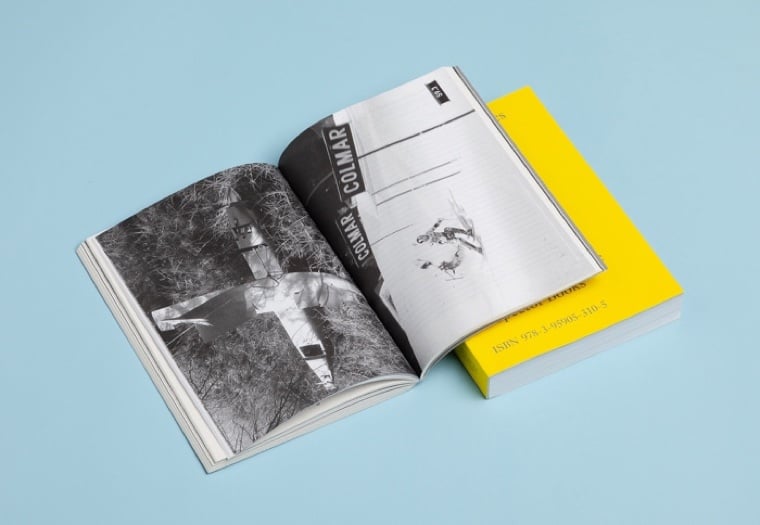
Paging all modern oligarchs, and French ministries and museums. “The ‘Château du Bouilh’ was tailor made for the last King of France, and has been left virtually untouched since the country’s Revolution.” It’s now for sale.
Something mysterious is going on inside the ice giant Neptune

When Voyager 2 reached Neptune in 1989 it discovered six new moons, took images of the planet’s rings and noted a particularly violent storm. Astronomers were also surprised to find that, despite being further from the sun than Uranus, Neptune was actually warmer.
“We can only measure temperatures in the outermost layers,” said Michael Wong, a planetary scientist at the University of California, Berkeley, via email. In doing so we find that Neptune isn’t actually hotter than Uranus in real terms — they’re essentially at the same temperature. But since Neptune receives less solar illumination because it’s farther from the sun, this shouldn’t be the case.
Uranus is the oddball here because it doesn’t emit almost twice as much heat as it absorbs, contrary to Jupiter, Saturn, and Neptune. Neptune, even thought it’s further from our star, is finding a way to warm itself up to the level of Uranus, while the latter is unable to generate any extra heat other than that gleaned from the sun.
Yet there is no clear reason why Uranus does not have much of an internal heat source — or any at all. “Something must have stunted this process on Uranus — perhaps due to a collision in its early history that knocked the planet on its side,” said Tollefson. “The question becomes, why does Neptune have an internal heat source but Uranus does not?”
Perhaps it’s because heat is released at varying rates and Uranus is in a quiescent period, perhaps it has to do with the age of each planet.
“On the gas giants there may be significant amounts of helium rain, changing the amount of heat released. For Uranus and Neptune it is possible that they are different ages or, more likely, the event that turned Uranus onto its side may have jumbled its interior structure and/or released heat faster,” said Simon.
Uranus’ winds can blow up to 560 mph and Neptune’s 1,500 mph. “They’re both extremely fast and peak at speeds faster than Jupiter,” said Tollefson. NASA says Jupiter’s Great Red Spot can blow at 384 mph. But he too says internal heat alone cannot explain the speeds, given Uranus does not generate extra heat.
The way the heat from the sun contributes to the winds, how heat exchange works in each planet, and the interaction of those aspects could explain why one generates more heat but it’s still an open question. One thing’s certain though, the fact that planets formed in similar conditions can result in two extremes “helps us constrain models of how these planets form and give clues about the solar system’s overall formation.”
Ok Google, cause some mischief

We already knew voice assistants were problematic and “spying” on their users, sending audio samples that contractors listen to to “validate” speech recognition and associated errors but now some researchers have found a way to speak to the speakers using light. Fascinating phenomenon, potentially a security issue.
They can now use lasers to silently “speak” to any computer that receives voice commands—including smartphones, Amazon Echo speakers, Google Homes, and Facebook’s Portal video chat devices. That spy trick lets them send “light commands” from hundreds of feet away; they can open garages, make online purchases, and cause all manner of mischief or malevolence. The attack can easily pass through a window, when the device’s owner isn’t home to notice a telltale flashing speck of light or the target device’s responses.
“It’s coming from outside the house.”
When they used a 60 milliwatt laser to “speak” commands to 16 different smart speakers, smartphones, and other voice activated devices, they found that almost all of the smart speakers registered the commands from 164 feet away, the maximum distance they tested.
Perhaps the best part in all of this; the researchers don’t really know how it works!
When it comes to the actual physics of a microphone interpreting light as sound, the researchers had a surprising answer: They don’t know. In fact, in the interest of scientific rigor, they refused to even speculate about what photoacoustic mechanics caused their light-as-speech effect.
(Emphasis mine.)
Second trailer for The Mandalorian
The “streaming wars” are starting in earnest with the launch of Disney Plus and I’m wondering how things will turn out, who’ll lose out, who’ll get favour swinging on their side. I can’t help but be disappointed that Disney owns so much of what I loved as a kid and teen (and still), and I don’t intend to have multiple subscriptions so there’s a good chance I won’t be seeing The Mandalorian for a while but… damn that looks fun! And that’s even before having Pedro Pascal smirk his way out of things à la Han Solo.
Andrew Liptak for Tor.com has some additional insights and links to visuals and more info about the series.
There’s other staples from the Star Wars universe present: carbon freezing (which seems to become a regular practice since Darth Vader froze Han Solo), speeder chases, giant creatures, and bars full of aliens. What’s also neat to see is that the Mandalorian seems to have two sets of armor: one that looks as though it’s cobbled from bits of armor from other places, and a nice, shiny set.
Incredible research by professor Suzanne Simard. “Never underestimate the intelligence of trees. Plants communicate, nurture their seedlings, and get stressed.”
The Internet Archive is now working to preserve vinyl LPs

The Internet Archive is an absolute treasure with a gigantic task ahead of them. They have now set their sights on vinyl LPs and started the work of digitizing and archiving these recordings.
Earlier this year, the Internet Archive began working with the Boston Public Library (BPL) to digitize more than 100,000 audio recordings from their sound collection. The recordings exist in a variety of historical formats, including wax cylinders, 78 rpms, and LPs. They span musical genres including classical, pop, rock, and jazz, and contain obscure recordings like this album of music for baton twirlers , and this record of radio’s all-time greatest bloopers .
Since all of the information on an LP is printed, the digitization process must begin by cataloging data. High-resolution scans are taken of the cover art, the disc itself and any inserts or accompanying materials. The record label, year recorded, track list and other metadata are supplemented and cross-checked against various external databases.
The Archive is partnering with Innodata Knowledge Services, who digitize the LPs in their facility in Cebu, Philippines. Setting up and turning over every album by hand and recording each side at normal speed.
Once recorded, there is a large FLAC file for each side of the LP, which needs to be segmented so listeners can easily begin at the desired song. There are two different algorithms used for segmenting; the first one looks at images of the vinyl disc to locate gaps in its grooves, which usually line up with gaps between songs. A second algorithm listens to the audio file to find the silent spaces between songs. When these two algorithms align, our engineers have a good measure of confidence that the machine has found the proper tracks.
Heidi Gustafson’s quest for ochre and mankind’s first pigments

It’s fascinating to me how people can focus, specialize in, and love a tiny narrow niche and make it their life’s work. Heidi Gustafson, who’s creating a many-colored library of one of mankind’s first pigments, ochre, is one such person.
[A]t her small cabin near the foothills of the Cascade Mountains, creating an extensive ocher archive to catalog samples she’s gathered along with submissions of the mineral sent in from all over the world. While there has recently been renewed interest in creating paints from natural pigments, Gustafson’s focus is on ocher alone — and it extends beyond the material’s artistic uses to its scientific, symbolic and spiritual properties.
She initially got on the trail for ochre through a dream, a trail, and an old quarry in Oakland, before moving up the coast to continue her quest.
In 2017, a year after relocating to rural Washington, she officially began her ocher archive. While she forages in the Pacific Northwest, a slew of archaeologists, artists, scientists and pigment makers — a number of whom heard about her project through word of mouth — have also contributed to the archive, submitting samples from as far as Zambia, the Brazilian Amazon, New Zealand and Russia. Once each specimen arrives at her studio, it is ground by hand into pigment, labeled and added to her collection, which now includes over 400 different samples.

Be sure to check out her Instagram account for a lot more pictures of her love for ochre and pigments.
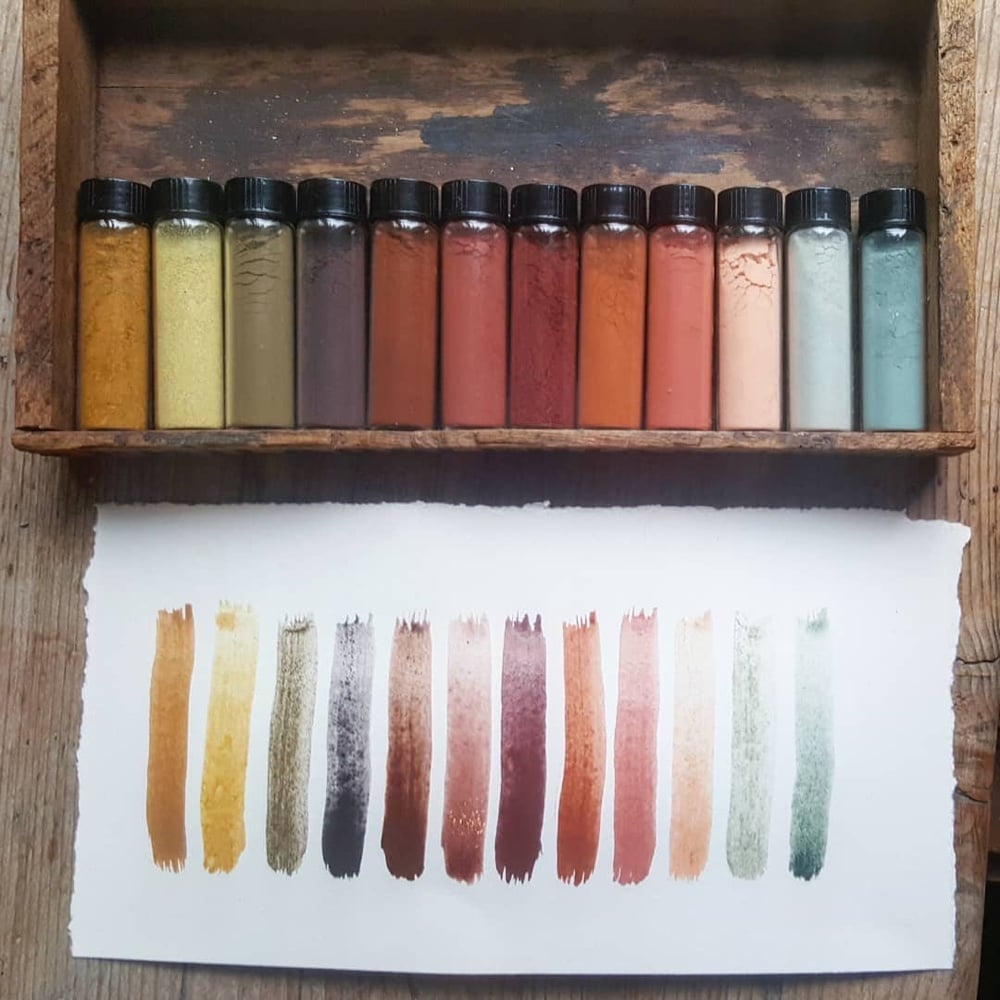
Update: The images in this post were originally from the New York Times article, and were replaced by some from Heidi Gustafson’s Instagram account.
The pronghorn is the second-fastest animal for top speed but first for longer distances. Interestingly, it doesn’t have natural predators anymore and doesn’t need that speed. It’s also where we learn that there was a now extinct American Cheetah!!
Helsinki has a library to learn about the world, the city, and each other

The Finns love libraries, and a new fabulous one opened last year in Helsinki. Tommi Laitio, Helsinki’s executive director for culture and leisure was at the CityLab DC conference recently and presented some of the thinking behind Finland’s investments in libraries and culture, and why they are so important to their country.
“This progress from one of the poorest countries of Europe to one of the most prosperous has not been an accident. It’s based on this idea that when there are so few of us—only 5.5 million people—everyone has to live up to their full potential,” he said. “Our society is fundamentally dependent on people being able to trust the kindness of strangers.”
One of the goals of the Oodi library is to make them less afraid of the various contemporary anxieties and from more informed citizens.
Nordic-style social services have not shielded the residents of Finland’s largest city from 21st-century anxieties about climate change, migrants, disruptive technology, and the other forces fueling right-leaning populist movements across Europe. Oodi, which was the product of a 10-year-long public consultation and design process, was conceived in part to resist these fears. “When people are afraid, they focus on short-term selfish solutions,” Laitio said. “They also start looking for scapegoats.”
The central library is built to serve as a kind of citizenship factory, a space for old and new residents to learn about the world, the city, and each other. It’s pointedly sited across from (and at the same level as) the Finnish Parliament House that it shares a public square with.
The library is widely popular and committed to openness.
Oodi just hit 3 million visitors this year—”a lot for a city of 650,000,” Laitio said. In its very first month, 420,000 Helsinki residents—almost two-thirds of the population—went to the library. Some may only have been skateboarders coming in to use the bathroom, but that’s fine: The library has a “commitment to openness and welcoming without judgement,” he said. “It’s probably the most diverse place in our city, in many ways.” (Emphasis mine)



The images are taken from this post on ArchDaily where you can also find a lot more views of the gorgeous spaces.
Nirmal Purja summits all 14 of the world’s 8,000-meter peaks in just six months

This is just a bit insane. A few days ago, Nepalese climber Nirmal Purja “reached the summit of 26,335-foot Shishapangmain Tibet, finishing a season that saw him summit all 14 of the world’s 8,000-meter peaks in just six months and seven days.”
Previous record? South Korean Kim Chang-Ho back in 2013, finishing in… just under 8 years!! That’s right, he beat the record by seven and a half years! As part of his Project Possible 14/7, he was also the first to reach the summits of Mount Everest, Lhotse and Makalu within 48 hours.
Over the course of those climbs, Purja and his team also took the time to save a few people, climbed K2 when “heavy snowfall forced most of the teams on K2 to abandon their attempts,” and got a special permit from the Chinese authorities to climb Shishapangma.
Project Possible consisted of three phases. During the first, Purja climbed Annapurna, Dhaulagiri, Kanchenjunga, Everest, Lhotse, andMakalu over the course of 30 daysin April and May. On Annapurna, he and his team fixed the ropes to the summit. On their descent, they learned that Malaysian climber Wui Kin Chin was in distress and alone above 7,500 meters. Purja organized the rescue and helped get Chin off the mountain (Chin died five days later).
While descending Kanchenjunga, the world’s third highest peak, Purja’s team found three climbers who’d run out of oxygen. The team gave up their own supply and helped the men down. To finish off phase one, Purja climbed Everest, Lhotse, and Makalu in under 48 hours. He tagged Everest and Lhotse in the same day, despite waiting in line for hours en route toEverest’s summit. That delay gave him time to snap the most viral photo of the Everest season.
Harnessing CRISPR to fight against superbugs

Yet another potential use for CRISPR, although the gene editing technology is usually considered for macroscopic tasks, like editing mosquitoes, tomatoes, CO2-eating “ideal plants”, or even human babies, new research aims to deploy it against bacteria and viruses. An alarming number of bacteria are now resistant to one or more antibiotics, so this new line of inquiry would certainly be welcomed if it proves effective.
In their recent study, Dr. Edgell and his colleagues successfully used a Crispr-associated enzyme called Cas9 to eliminate a species of Salmonella. By programming the Cas9 to view the bacterium itself as the enemy, Dr. Edgell and his colleagues were able to force Salmonella to make lethal cuts to its own genome.
As we discover more of the benefits of our microbiota, it would also be interesting to have a solution to bacterial infections which doesn’t create problems for our “good bacteria.”
Conventional antibiotics do not distinguish between good and bad bacteria, eradicating everything indiscriminately and occasionally creating problems for people with weakened immune systems.
There’s still a long way to go though.
Now researchers face the challenge of demonstrating that Crispr antibacterial and antiviral drugs are effective in living animals and in humans, not just in the lab, and that they will be cheaper than conventional therapies, Dr. Barrangou said.
Posters as gateways to a more expansive world
While we’re on the world building topic, here’s another article on design within games, this one about the posters used in the upcoming Control and the Polish cyberpunk-horror game Observer.

Alongside various made up advertisements, brands, book covers and propaganda signs, posters are symbolic of a larger universe, helping to broaden and flesh out any fictional world. An incredible amount of effort is put into creating video game settings, and the poster is but one of many tiny details carefully designed to draw you deeper.
The designers for both games were able to research the vast number of posters of different periods and locations to inform their own creations.
“Posters were a great tool for us to build a story and establish the world design. In one way, they show how this future world is organised, the rules of it etc. but they also represent the protagonist’s various dilemmas,” Lenart explains.
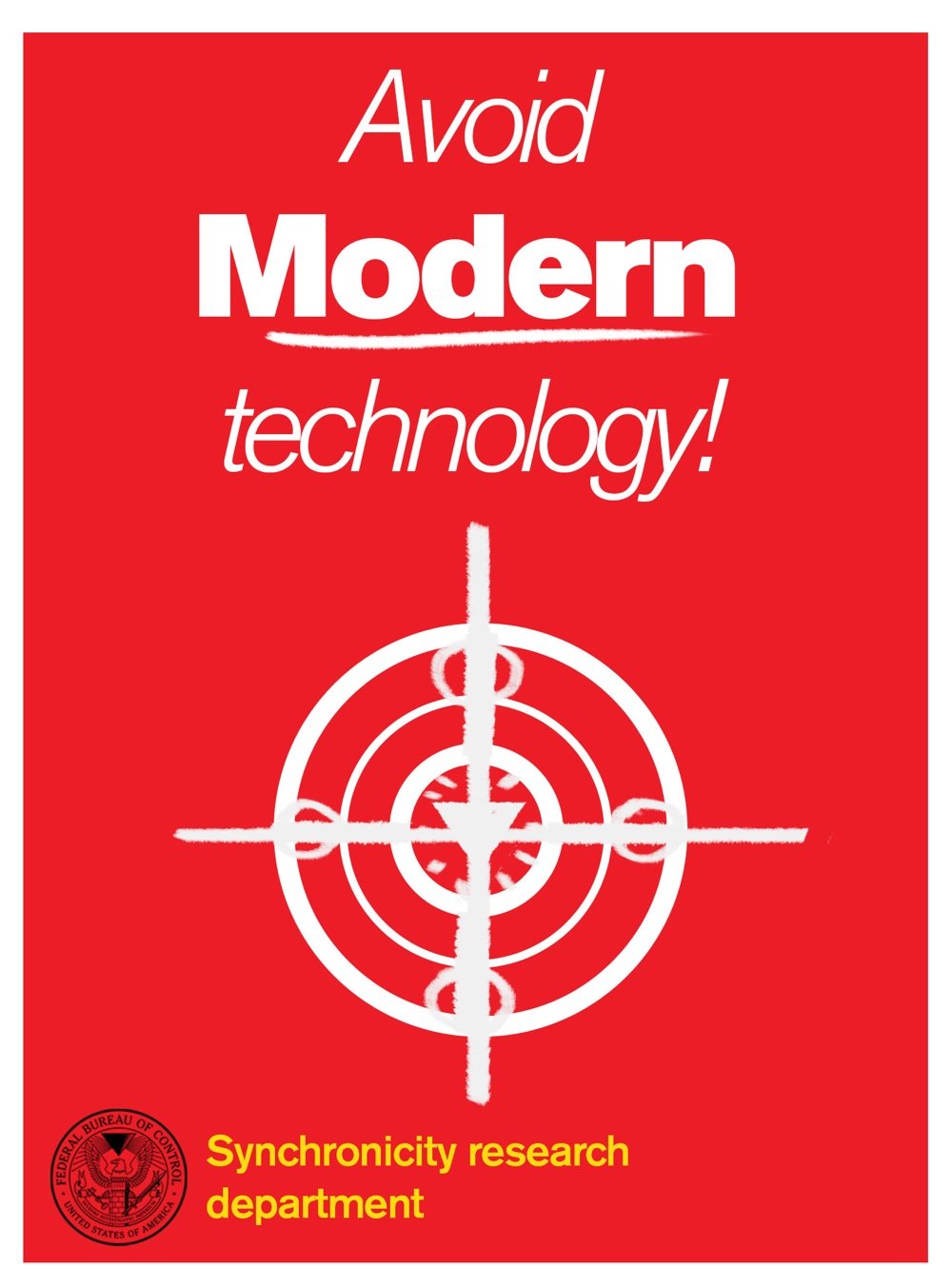
“If done right, [the posters] can help convey everything from small trivial details to the broader story arc. These aspects enrich and deepen the lore and the world.”

Death Stranding’s world building intersects with fashion and design
Can’t say I’m much of a gamer but I like when things intersect in interesting ways and the launch of Hideo Kojima’s Death Stranding is one of those times. This is a huge launch with lots and lots of coverage, you’ll probably be seeing it everywhere. The GameSport review, which gives a great idea of the look and gameplay, is above and here’s more of what it’s about, from the review at The Verge:
Death Stranding takes place in a distant future, one that has been ravaged by a largely unexplained phenomenon called the death stranding. It wiped out cities and almost all life while opening a gate between the worlds of the living and dead. Those ghostly BTs haunt forests and mountains, and certain humans called repatriates are able to return to life from a strange underwater space known as the Seam. Sam, played by Norman Reedus, is one of these repatriates. He’s also something of a post-apocalyptic delivery man, shuttling supplies from one settlement to the next. Early in the game, he’s given a particularly ambitious task: reunite America (now known as the UCA, or United Cities of America) by traveling across the country, connecting settlements to a sort of internet-like network. At the same time, Sam is trying to reach the west coast of the country to rescue his sister who has been captured by a terrorist organization.
David Erlich at IndieWire is calling it the best video game movie ever made.
Massive, moody, and — as usual for the video game auteur — weird as hell. The open-world experience has enough contemplative moments to make it feel like a “Grand Theft Auto” sequel directed by Andrei Tarkovsky, and it’s the greatest achievement yet from the most eccentric and forward-thinking designer of a medium in which virtually every large-scale project is created by committee.
But what I’d like to draw your attention to is where Kojima’s vision intersects with fashion and design. As Ryan Epps says at TheGamer, Death Stranding Is A Tangled Web Of Designer Collaborations.
Kojima not only intends on reshaping the landscape of conventional open-world gaming (and redefining the meaning of genre itself), but has his eyes set on revolutionizing narrative design and video game cinematography by way of listless immersion.
The motorbike is a collaboration with Norman Reedus’ television show The Ride, glasses are designed by French eyewear brand J.F.Rey, and some of the better looking clothing is designed by Errolson Hugh’s Acronym. While it edges (perhaps goes over for some) into product placement, it goes further, being co-designed for the game and each informing the other. The collaborations span the globe and form a mix to draw in more fans.
As so exemplified by these varied artists, designers, and thinkers, Kojima’s project will boast some of the most interesting forms of immersive insight. Much like how the gameplay itself finds players drawing the world back together in a time of hardship and desolation, the game’s own creation has been a global project that will, in essence, capture the hearts and minds of so many gamers just by the sheer amount of worldwide influence present in its DNA.
For my part, the collaboration with Acronym ( Hypebeast has a few details and pictures about the collaboration ) is especially of interest with Hugh’s design already being so adjacent to near-future fiction and cyberpunk aesthetics. According to GQ, he Sees the Future and he has been having this same kind of bidirectional influence with William Gibson for years.
Please dig through some of the links above if you like this aesthetic and keep an eye on these kinds of collaborations in world building, which are bound to multiply and “attach” more domains of gaming, movies, design, and architecture together.
Revisit the history of the scroll bar
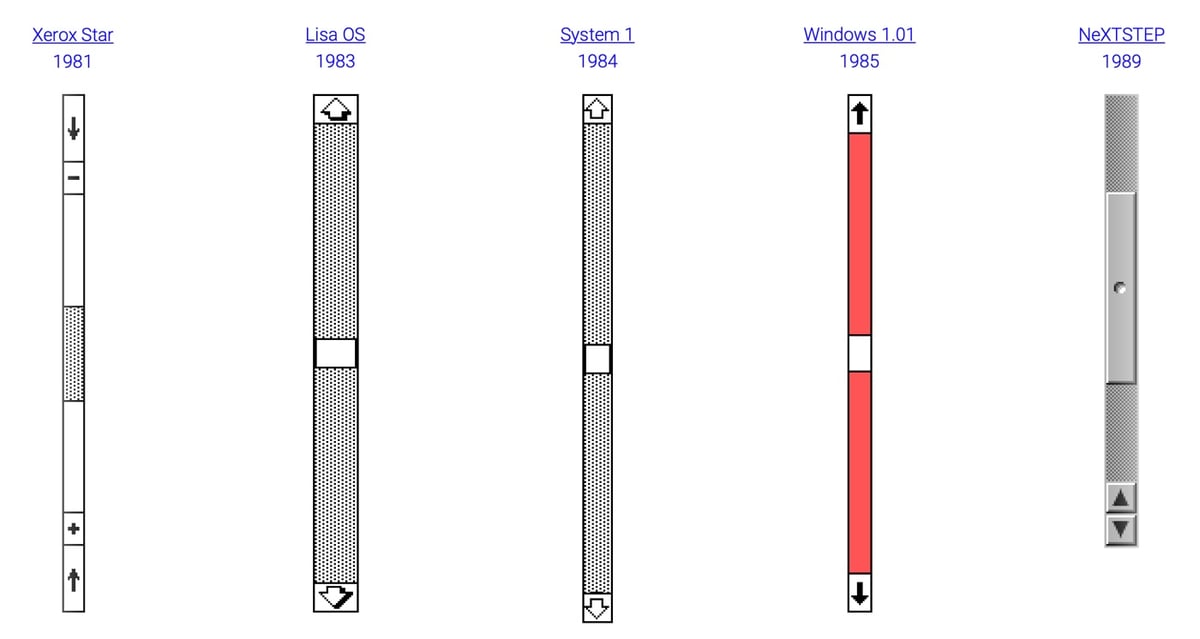
This is the kind of thing fin to look through while at the same time wondering “you did what now??” Sébastien Matos researched and recreated the scrollbars of various operating systems of the last thirty years. Grayson Blackmon at The Verge goes through all of them and gives his “very serious review of scroll bars through history.”
It’s part of the Information mesh projects by the The ECAL study group, part of the swissnex Salon.
Information Mesh is a web platform celebrating the 30th anniversary of the World Wide Web that explores social, technical, cultural and legal facts throughout different interactive timelines. … The timelines present an overview of Web history, starting with the proposal for hypertext by Tim Berners-Lee at CERN in 1989, initially under the name “Information Mesh.” From this start date, users can then explore 30 years of evolution.
Once overlooked female Old Masters finally getting their due

There’s growing visibility and demand for the work of female artists of the Renaissance and Baroque periods, from The Museo Nacional del Prado showcasing the work of Sofonisba Anguissola and Lavinia Fontana as part of its 200th anniversary programming, to Sotheby’s achieving record-breaking prices for female Old Masters, to D.C.’s National Museum of Women in the Arts current “Women Artists of the Dutch Golden Age.”
Anguissola was a celebrated portraitist in the late 16th and early 17th centuries whose fame earned her a place as a lady-in-waiting to Isabel de Valois at the court of King Philip II of Spain. Fontana worked around the same time in Rome and Bologna, disregarding the limits of genres imposed on her sex, even painting from the nude—a practice from which women were generally excluded at the time.

As often happens when trying to right some imbalances, it starts with breaking the loop of being too unknown to be featured but needing to be exhibited to become known.
Art historian Katlijne Van der Stighelen first rediscovered the Baroque painter Michaelina Wautier in the 1990s, but found it impossible to get support for an exhibition as museums would not risk gambling on an unknown artist. It was not until the Flanders tourism department decided to invest heavily in a three-year exhibition program, beginning in 2018 with Peter Paul Rubens and Baroque painting, that she finally got her chance.
Until of course someone finally “takes a chance” only to find out that yes, there is a thirst for more diversity of voices in all domains.
The response exceeded anything Van der Stighelen or MAS could have hoped for. Both the national and international press were attracted by the “surprise element” of an artist so technically accomplished, yet completely unknown. By the time the show came down in September 2018, some 40,000 visitors had seen it—about four times the usual number for a summer show at MAS, according to Van der Stighelen.

The Fantastic Fungi Pictures of Alison Pollack

To finish the week, some absolutely gorgeous mushroom and myxomycetes pictures by Photographer Alison Pollack who gets close to the ground with a magnifying glass to find her subjects.
The smaller they are, the more challenging they are to photograph, but I absolutely love the challenge, [m]y goal is to show people the beauty of these tiny treasures that are all around the forest but barely visible unless you look very very closely.


Cleaning trash from rivers before it reaches the ocean

The nonprofit The Ocean Cleanup “secretly” developed another idea to clean oceans, The Interceptor which aims to stop trash in rivers, before it even reaches a greater body of water.
[W]hile countries and companies try to make more fundamental changes—like reusable and refillable packaging, single-use packaging bans, and recycling systems that actually work—it’s clear that tackling the problem in rivers is one part of the short-term solution.
When it comes to cleanup, it’s also far more effective to start on beaches and on rivers rather than trying to tackle the problem in the middle of the ocean. The Ocean Conservancy, which conducts beach cleanups, is also beginning work on a river cleanup system in Vietnam.
The Interceptor takes the form of a barrier anchored to the riverbed, which directs trash into the system. It runs on solar power and in just one day it “might extract as much as 50,000 kilograms of trash; depending on the currents, tides, and how much plastic is in a given river.” According to their research, just 1,000 rivers are responsible for over 80% of the trash entering the ocean. The first two Interceptors are already at work in Klang, Selangor, Malaysia and the Cengkareng drain in Jakarta, Indonesia.
New research shows how sleep cleans toxins from the brain
Sleep is one of those things we still don’t completely understand and new discoveries are still being made. This research is quite interesting, as it brings some insights into how sleep cleans toxins from the brain.
“First you would see this electrical wave where all the neurons would go quiet,” says Lewis. Because the neurons had all momentarily stopped firing, they didn’t need as much oxygen. That meant less blood would flow to the brain. But Lewis’s team also observed that cerebrospinal fluid would then rush in, filling in the space left behind.
The brain’s electrical activity is moving fluid in the brain, clearing out byproducts like beta amyloid, which can contribute to Alzheimer’s disease.
So brain blood levels don’t drop enough to allow substantial waves of cerebrospinal fluid to circulate around the brain and clear out all the metabolic byproducts that accumulate, like beta amyloid.
Independent of the science, you have to wonder how people manage to sleep in an MRI machine!
Lifting bodies and the X-37B

A few days ago, the US Air Force’s X-37B space plane landed after 780 days in orbit, which is kind of incredible. We don’t know all that much about the plane which was originally a NASA project, before being taken over by the Air Force. This was its fifth and longest flight.
The 11,000-pound vehicle is about 29 feet long, with a wingspan of just under 15 feet, and was designed to stay in orbit for 270 days. It was originally a NASA program, with roots in the space agency’s lifting-body research, that ran from 1999 to 2004. The X-37B is designed to serve as a platform for experiments and to offer insights on transporting satellite sensors and other equipment to and from space.

Perhaps the most interesting bit though is digging a bit into this lifting-body aspect. There some more details on the project here at Space, including the commercial potential of this type of body.
We believe that there is a place for lifting body runway landing spacecraft in thecommercial and government fleet to accomplish not only International SpaceStation crew and cargo transport but also to conduct other viable missions, forsatellite deployment and other near space operations.
There’s also a good piece here at Wired from 2013 on the history of lifting body planes.
Theoretical work on lifting bodies began in the United States in the 1950s at National Advisory Committee for Aeronautics (NACA) laboratories. Early lifting bodies took the form of horizontal half-cones with rounded noses and flat tops. They were viewed mainly as steerable reentry bodies for nuclear warheads launched on Intercontinental Ballistic Missiles. By the end of the 1950s decade, however, as the 1958 Space Act transformed NACA into NASA and transferred to it most Department of Defense space facilities and projects, some engineers began to propose that lifting bodies serve as piloted reentry vehicles.
(Matthieu brought the lifting bodies to my attention.)
Life inside CERN
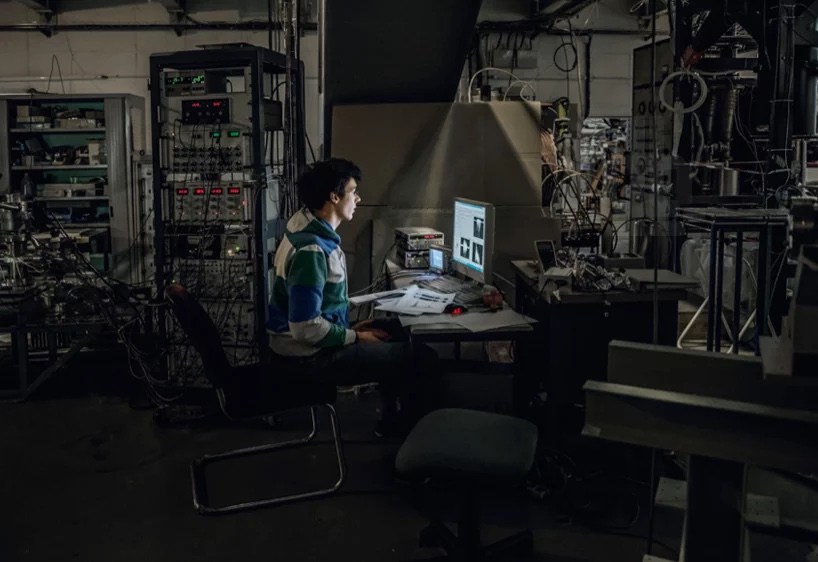
It’s always (to me anyway) interesting to see artists’ studios, artisan workshops and the like. I’m pretty sure if I’ve ever wondered what the labs of particle physicists look like but, thankfully, Andri Pol and author Peter Stamm did, and there’s now a book of their observations.
Throughout the publication, a fascinating juxtaposition is established, contrasting reassuringly familiar scenes with some of the most complex pieces of scientific equipment anywhere in the world - a worker is shown seemingly exasperated by a coffee machine, while another employee is visible taking a sip of water meters from the hadron collider itself. The photographer presents his subjects amongst mountains of stacked books, tangled in webs of cables and immersed in endless scrawls of equations and formulae.







Stay Connected